Top 50 Best Cities in the United States Today
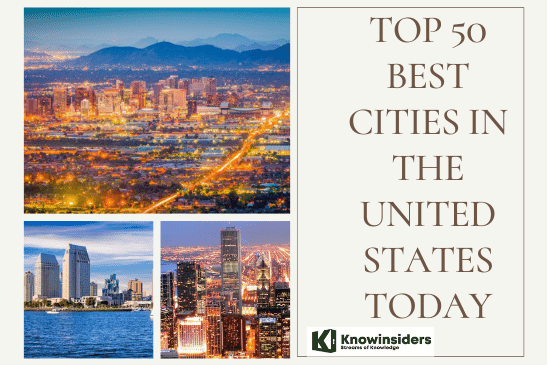 |
| Cities of the United States. Photo: KnowInsiders |
Across the nearly 30,000 cities, towns, villages and unincorporated places in the United States, these and other factors that are closely tied to quality of life vary considerably.
Local governments bear some degree of responsibility for neighborhood safety, economic vitality, the presence and condition of public spaces, and a wide range of other amenities and services that affect the daily lives of local residents.
As 2021 kicks off, loving the place you call home has never been more important. Despite the COVID-19 pandemic pushing urbanites to search for more space, cities will continue to thrive with the promise of career opportunities and an array of cultural offerings.
The List of 50 Best Cities to Live in the United States
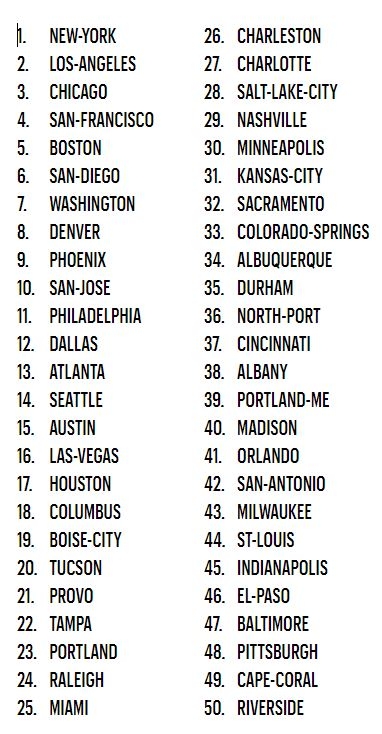 |
| Photo: Knowinsiders |
Which are the 50 Best Cities to Live in the United States?
1. New York
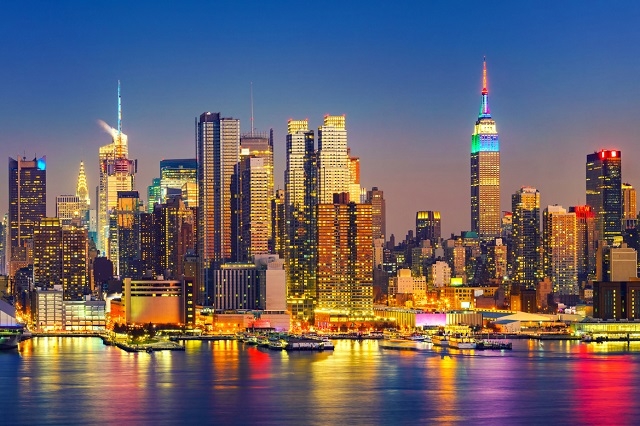 |
| Photo: Korean Air |
The greatest city in America—lauded and crowned in our ranking for the past six years and countless others for many more—was a ghastly reminder during the pandemic of the vulnerability of even the colossal, the seemingly all-powerful; we saw here what awaited the rest of the country. And the world. As early cases spiked, Gotham became the nation’s nightmarish coronavirus core. The economic scars are all over the city’s 2021 rankings.
New York still has the most Fortune 500 headquarters in the nation, but its ranking in this year’s Change in Unemployment Rate subcategory is so low that it now ranks out of the Top 100, at #107. The city still ranks #1 in our Place category—tops in the subcategories it has always dominated, like Sights & Landmarks and Top 5 for its natural environs and parks. But its Safety subcategory, which tracks homicides—a point of pride for the city and its boosters in recent years—slipped to #7.
But despite this unprecedented everything, some solace from the beforetime. “New York City is reawakening, with infrastructure upgrades, a packed cultural calendar, world-class hotels, a new outdoor dining scene, multicultural neighborhoods to explore and many more vibrant offerings on display across all five boroughs this year,” Fred Dixon, president and CEO of NYC & Company, told Resonance in May.
2. Los Angeles
 |
| Photo: U-Haul |
In a city famous for hyperbole, it’s not an overstatement to declare that L.A. teetered on the verge of the COVID-19 abyss multiple times in 2020 and early 2021. The city has a long, long way back. As of February 2021, the unemployment rate was almost 10%—among the worst numbers of all large U.S. cities, and the city sits toward the bottom of this year’s Change in Unemployment Rate subcategory. But given the pent-up demand to get on with California dreaming, breaking tourism records and rolling out one multi-billion-dollar infrastructure project after another, L.A. will not be down for long, starting with its #2 Product ranking.
The new SoFi Stadium, the largest in the National Football League at 3.1 million square feet, officially opened last fall to host the NFL’s Rams and Chargers home games. In February 2022, it will host the Super Bowl. Adding to L.A.’s #2 Museums ranking is the opening of the visually stunning Academy Museum of Motion Pictures, punctuated with a temporary exhibit of acclaimed artist Hayao Miyazaki. Amazingly, all nine of LAX’s terminals are in the midst of a $14.3-billion modernization. You’ll be hearing a lot more about L.A. this fall, when the city’s inspiring “Your Comeback Starts Here” campaign is rolled out nationally, a first for the city.
3. Chicago
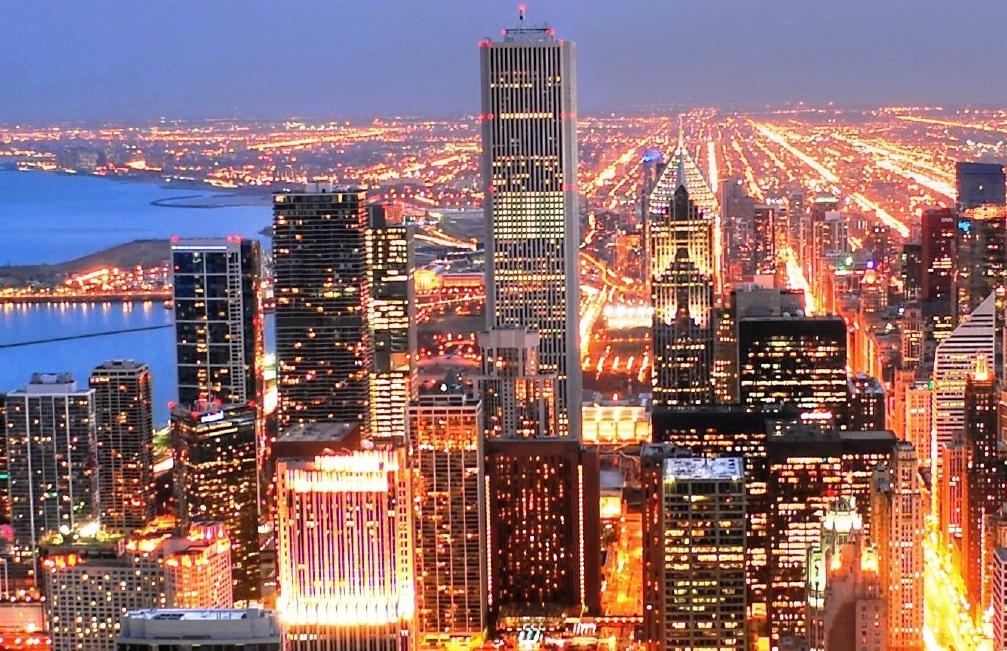 |
| Photo: DishwasherHero |
Few American cities fell harder in visitor numbers in recent months than Chicago. Whether for business or pleasure, the city had been attracting tourism at record-breaking levels year after year. Its #3 ranking in our Programming category—including #5 in Shopping, #3 in Restaurants and #2 in Nightlife—speaks to the plentiful buzz that Chicago was perfecting before everything ground to a halt. And what a far fall it’s been, with the city’s residents and prosperity hit the hardest.
Chicago suffered the worst one-year change in median family income between 2019 and 2020 in the Top 10, and ranks among the bottom of all 100 cities on our list. While real estate prices were left relatively unscathed in cities like San Diego, Phoenix and San José, Chicago hits near the lowest in our rankings for one-year change in median home prices between February 2020 and February 2021. It’s a surreal real estate plunge for America’s Top 3 city. The hardship of the past 18 months only means the city is spring-loaded to return to its quiet productivity. Of course the biggest news is the legacy of one family of proud Chicagoans: the Obamas. This year ground will be broken on the Obama Presidential Center in Jackson Park, a marquee attraction on Chicago’s South Side.
4. San Francisco
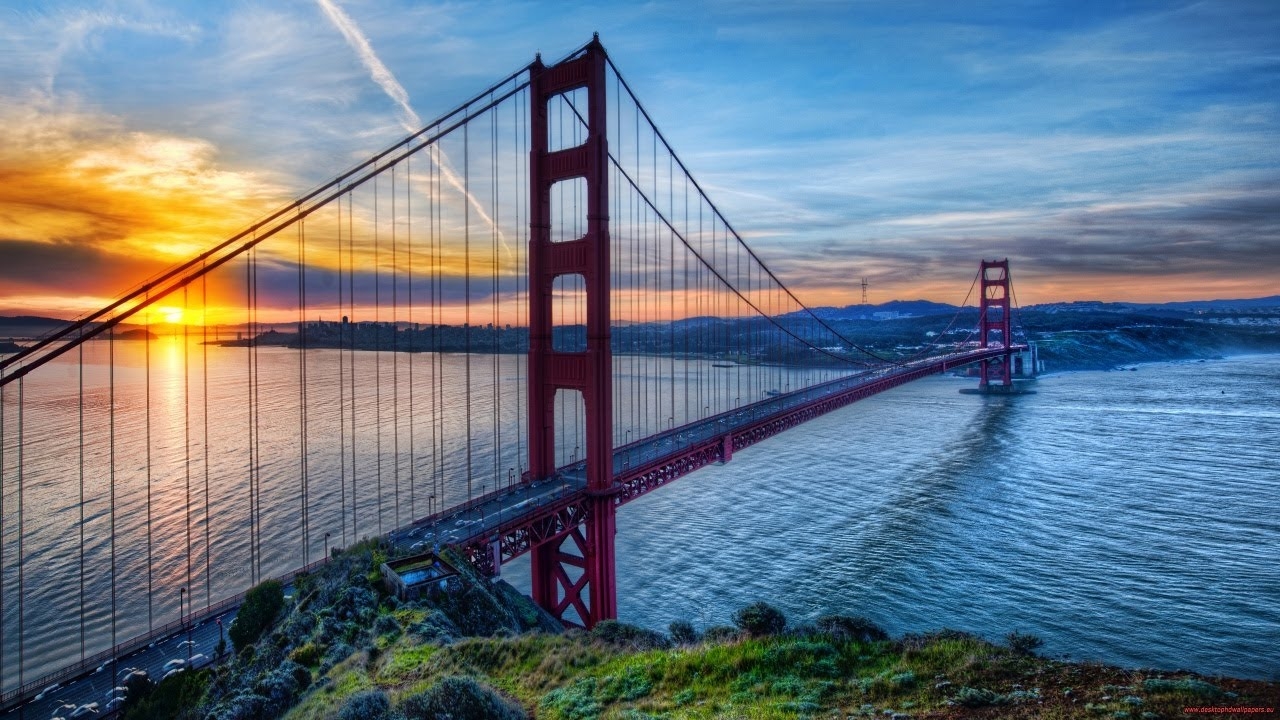 |
| Photo: Cẩm nang du lịch |
Home to over 870,000 people, San Francisco is the most populous city on this list. Though its cost of living is higher than nearly every other city in the United States, incomes in San Francisco are generally high enough to offset the high prices at least somewhat. The majority of households in the city earn over $100,000 a year while the typical American household earns only about $60,000.
People living in San Francisco have access to a wide range of entertainment, cultural, and recreation venues. The per capita concentration of places like restaurants, bars, gyms, museums, theater companies, and movie theaters is far higher than average.
5. Boston
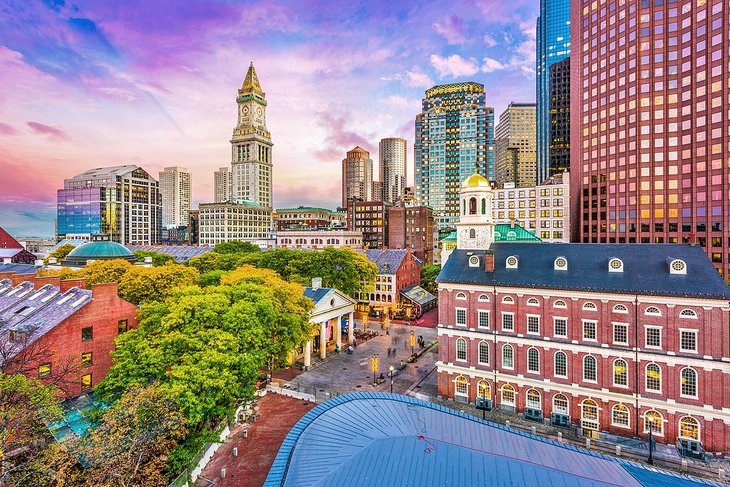 |
| Photo: PlanetWare |
A hub of higher education and home to the fourth-best-educated workforce in the nation, Beantown produces a steady stream of new talent to help attract start-ups and established companies alike. Future talent gravitates to Harvard, of course—the country’s top school (and a big reason why the city is #1 in our University subcategory and scored #4 in our overall Product category, which measures hard-to-build infrastructure in subcategories like Airport Connectivity)—as well as to Boston’s density of other world-class universities and colleges. Given this devotion to celebrating human potential, it’s no wonder Boston ranks an impressive #2 in our People category, including #4 in our Educational Attainment subcategory.
And in further confirmation that locals here are fiercely loyal to their city, Boston performed third-best this year in our Change in Civilian Labor Force subcategory among all Top 10 cities—and middle of the pack among our Top 100—meaning the big urban exodus we all read about last year didn’t hit Boston quite so hard. The city is getting back to its ambitious buildout. Hotel inventory is projected to grow by almost 5,000 new rooms in the next five years alone, a 20% increase in supply, mostly planned for the South Boston Waterfront near the Boston Convention & Exhibition Center, while the area south of North Station will undergo transformative projects not seen in decades.
6. San Diego
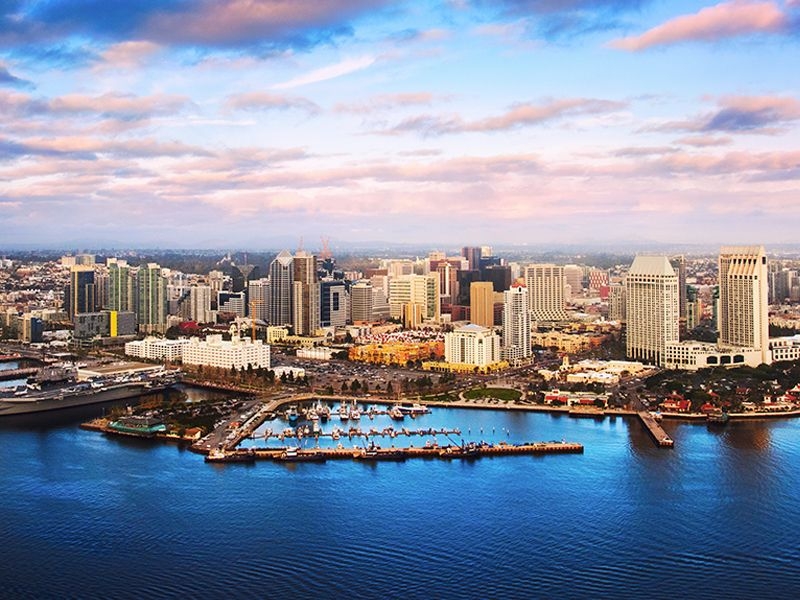 |
| Photo: NOW CFO |
You could say that San Diego is where California began. It was here that Spanish settlers established the region’s very first mission in 1769. Today it’s one of the fastest-growing in the U.S.
it is, the city comes in with a strong 9th-place finish thanks to its relative safety, gorgeous beaches, and 16 colleges. For San Diego residents, picking which beach can be the hard part. Coronado lies just to the south, La Jolla to the north, with Mission Beach in between.
The city’s bounty of attraction, ranked #7 in the country, will also reopen, eager to show off millions in infrastructure investment. In what will surely be the exclamation point announcing that San Diego is back, Comic-Con will resume as an in-person event, just in time for the much-anticipated opening of the Comic-Con Museum in Balboa Park’s former Hall of Champions building.
7. Washington
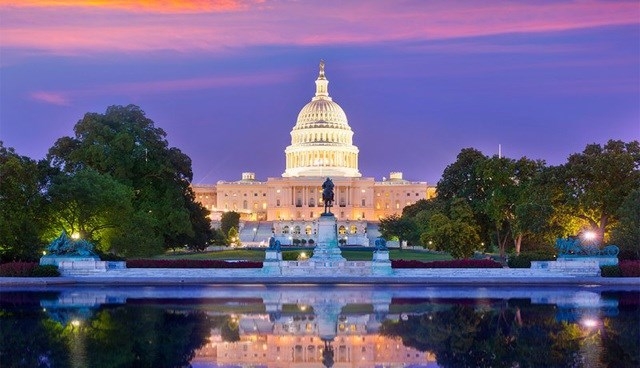 |
| Photo: VietnamPlus |
The ubiquity of D.C. in dramas on screens small and large, combined with the shocking events of the past year—from the most-watched presidential election campaign in history to the insurrection at the U.S. Capitol—means we’re all thinking about America’s capital city. In fact, powered by its ranking as the most-Googled U.S. city and the seventh-most checked-in on Facebook, Washington ranks #4 in our Promotions category this year. Given its residency in global consciousness and resonance in the zeitgeist, there are few cities so poised to build on the exposure of the past year and surpass its record 24.6 million total visitors arriving in 2019.
Before COVID-19, 2020 was going to be one of the busiest ever for D.C. development, and a lost year will only accelerate the planned $10 billion in the city-building pipeline. Food and dining is also helping D.C. pursue equity, starting in the city’s Ward 7 and Ward 8, where the predominantly African American residents have had only three major grocery stores serving a population of 150,000. That’s seeing change with Market 7, a sprawling food hall touting Black-owned businesses. The jewel in the city’s culinary crown is the $250-million RiverPoint, two blocks from Audi Field, between Capitol Riverfront and the Wharf, with piers, waterfront activity and plans for new restaurants. With all this culinary investment, the city’s #17 Restaurants ranking will surely improve.
8. Denver
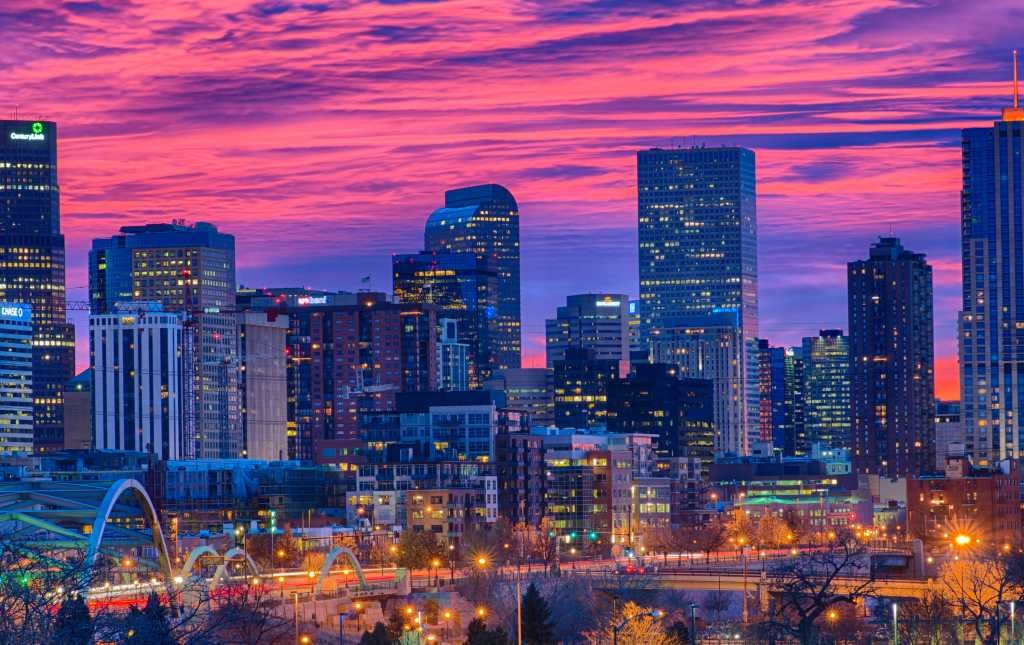 |
| Photo: Beetours |
With a population of over 690,000, Denver ranks only second behind San Francisco on this list. Denver residents benefit from a higher than typical concentration of cultural attractions and entertainment options like bars, restaurants, museums, movie theaters, and recreation centers.
Many Denver residents also have options when it comes to the daily commute. Some 14.5% of the commuters in the city use transportation other than a personal vehicle, well above the 9.5% share nationwide.
9. Phoenix
 |
| Photo: US Medical Escorts |
In addition to the Chase Tower, Wells Fargo Plaza and other buildings that dot the Phoenix skyline, a crowd of close to 20 construction cranes as of this past fall symbolize the city’s continued growth. The Southwestern city stands tall with plenty of employment opportunities in healthcare and finance and, of course, an abundance of sunshine.
While Phoenix falls closer to the bottom of the fitness index, the metro area has plenty of ways to stay active, including a picture-perfect hike up Camelback Mountain.
10. San José
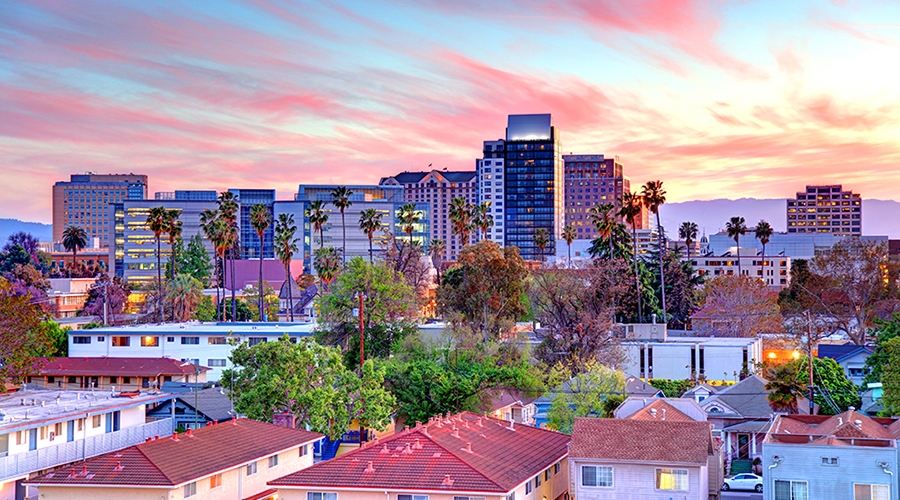 |
| Photo: TeamHealth |
It’s fascinating what a well-educated, well-paid and diverse population can do for a city’s rankings. In the case of San José, the economic, cultural and political capital of Silicon Valley and California’s oldest civilian Spanish settlement, it’s everything. The city’s talent has propelled it to a Top 10 overall finish in 2021, even amidst the pandemic and the crescendo in tech circles that “everyone is leaving the Valley.”
Despite crushing housing costs and a temporarily battered tech sector, San José still boasts the most educated populous in the country, ranking tops in our Educational Attainment subcategory. An undeniable area of concern, however, is the fact that the city performs poorly this year among both our Change in Civilian Labor Force subcategory, as well as in its unemployment rate (both in the bottom 20th percentile). But San José doesn’t intend to lose its people—or jobs—for long. There’s just too much support from America’s titans of industry and innovation. The institutional prosperity in the city has minimized the economic devastation of the pandemic seen almost everywhere else in the nation, with San José ranking #13 in this year’s Change in Median Family Income subcategory, part of the city’s overall Top 3 finish in our Prosperity category.
11. Philadelphia
 |
| Photo: MAA |
Given its deep roots in the creation of the Union 240 years ago, Philadelphia is a dense, cataloged embodiment of American values and traditions, easily accessible and eagerly shared. Small wonder, then, that it ranks an impressive #6 nationally in our Sights & Landmarks subcategory, ahead of places like Boston and San Diego, and Top 10 in our sprawling Product category (comprised of difficult-to-build big city infrastructure like airport connectivity and museums). Speaking of which, the city ranks #7 in our Museums subcategory.
Joining icons like the Liberty Bell Center this year is 90,000 square feet of new public and exhibition space at the Philadelphia Museum of Art, as part of the Frank Gehry-led expansion. The city is also investing outdoors, with the central section of the Delaware River Trail opening this year for those not ready to mingle quite yet. No wonder National Geographic and Condé Nast Traveler are heaping accolades. The City of Brotherly love ties with Seattle for the 12th-most Fortune 500 companies in the country and features a growing population—somewhat waylaid by a pandemic exodus—and a glittering skyline heading ever upward.
12. Dallas
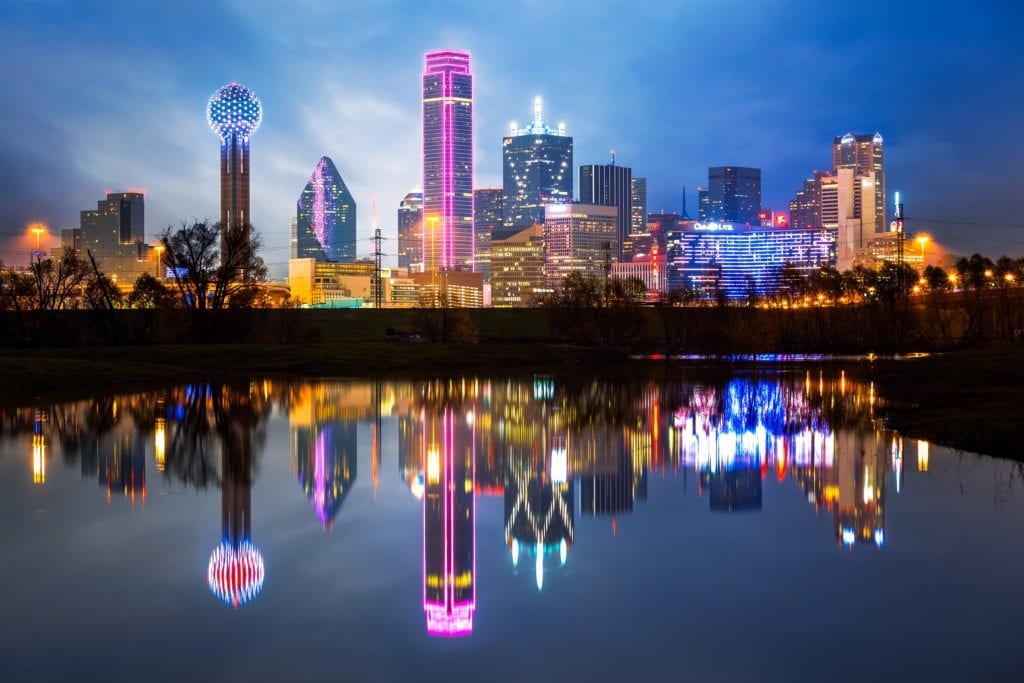 |
| Photo: PlanetWare |
It’s not only city sloganeering that’s big in Dallas. It’s an economic reality, too—The Big D is home to more than 10,000 corporate headquarters—the largest corporate head office concentration in the U.S.—and ties with San José for third-most Fortune 500 companies located in the city. Of course, a city with lots of corporate headquarters is a city that’s easy to get to: Dallas tops the nation in our Airport Connectivity subcategory, a measure of direct flight access into a city’s principal airport.
The Dallas/Fort Worth International Airport’s planned $3-billion Terminal F project is on hold until travel rebounds, which, given the city’s trajectory pre-pandemic, shouldn’t take long. But Dallas isn’t just big on money; it’s big on fun and culture, too. This is the home of America’s sixth-largest LGBTQ+ community. On 20 square blocks of mixed-use space, institutions like the Dallas Museum of Art, the Crow Museum of Asian Art and the renowned Nasher Sculpture Center—as well as theaters, symphony and opera venues, plus restaurants and bars—all contribute to a #16 ranking in our Programming category, which includes the 11th-best restaurants in the country.
13. Atlanta
 |
| Photo: Arab America |
Long a progressive beacon of diversity in Georgia, Atlanta’s rich legacy of American civil rights—the city lays claim as the birthplace of Martin Luther King Jr.—powered the long-conservative state to flip to the Democrats in the 2020 election. The eyes of the world were on Atlanta in November and January and saw the city’s embrace of a rich, living history, from the must-see Center for Civil and Human Rights to the King Center for Nonviolent Social Change. Small wonder, then, that ATL performed well in our Promotions category, including #6 nationally for Google Searches, Google Trends, and Instagram Hashtags.
This bodes well for the city once travel returns. Atlanta has always been a crossroads—open to new ideas, and to the new arrivals who came to this lush, hot, rolling land when the city rose as a railroad terminus. Today, it’s still a transportation hub, with Hartsfield–Jackson Atlanta International Airport one of the busiest airports in the world (80% of the U.S. population resides within a two-hour flight). It’s why the city ranks Top 5 for Airport Connectivity nationally, as well as #12 in our Attractions subcategory, resulting in an overall #11 ranking for Product.
14. Seattle
 |
| Photo: PODS |
Seattle’s self-reliance and dedication to taking care of its own has fostered over 150 years of city-building on the far-flung northwest coast of the U.S., setting the stage for its nearly decade-long run as America’s boomtown. That resilience was on display after the city became among the first in the U.S. to experience runaway COVID-19 outbreaks.
But as the New York Times noted this past March, “One year later, the Seattle area has the lowest death rate of the 20 largest metropolitan regions in the country. If the rest of the United States had kept pace with Seattle, the nation could have avoided more than 300,000 coronavirus deaths.” In many ways, Sea Town reverse engineered its success. Keeping the talent pipeline stocked has always been Seattle’s secret—and it’s paid off. Today, it ranks #9 in our important People category, and #11 for Educational Attainment of its citizenry. The reopening will showcase the city’s ascent in our Programming category, including #6 in the Shopping subcategory and #9 for Nightlife. The #15 Product ranking will also improve with new museum openings and the debut of the National Hockey League’s Seattle Kraken this fall.
15. Austin
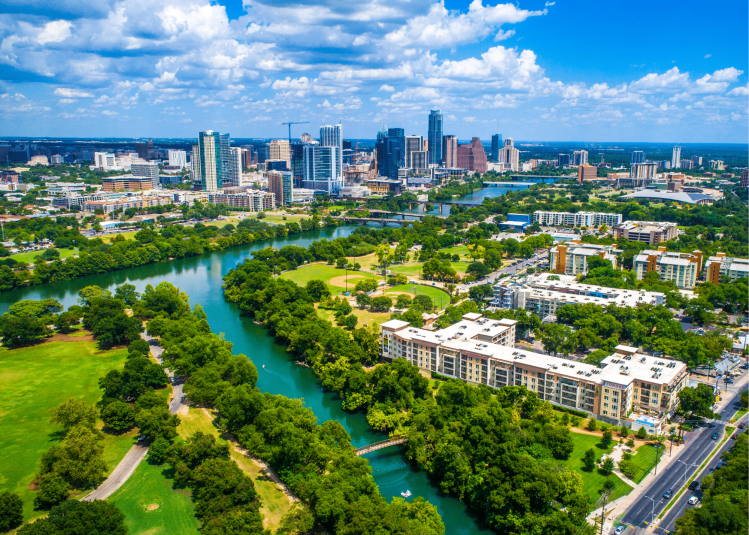 |
| Photo: One Chel of an Adventure |
The rebellious Texas city—forged with the Longhorn State’s can-do persistence cut with a university town’s political activism and social diversity—has long attracted the misfits who don’t quite fit into the American south’s expectations. Today, it’s attracting everyone else—from Silicon Valley, New York—even Seattle. The result is a housing boom (#11 in our Change in Home Prices subcategory), and a net gain in Change in Civilian Labor Force (#34). As a result, the city ranks #7 in our People category, including #9 for Educational Attainment.
A lot of the brainpower arrives for the #22-ranked University of Texas at Austin, and many never leave. That foundation of thinking differently drew dreamers for decades. Local marketer Visit Austin trademarked the city as “the Live Music Capital of the World.” Post-pandemic, the city’s entertainment districts will be fêted like never before. South by Southwest, the annual summit of business, music and creativity, has seeded the area’s magnetism for new ventures. As such, monikers like “Silicon Hills” have followed campus openings by Apple, Facebook, Google, Oracle, Dell, Cisco and Hewlett-Packard. A skills shortage is being mitigated somewhat by a steady flow of graduates pouring out from UT Austin and new talent from both coasts.
16. Las Vegas
 |
| Photo: MAA |
The story of Las Vegas blossoming into a “real city” has been told of late with breathless praise for its economic success. Tourism—the #1 economic driver for Southern Nevada—has long paid for Las Vegas’ roads, parks, school construction and teachers’ salaries. According to the Las Vegas Convention and Visitors Authority, more than 41% of Southern Nevadans are employed directly or indirectly because of tourism. But this single reliance on the visitor economy also means that the COVID-19 outbreak decimated Las Vegas like few other American cities. House price decline and the exodus of the labor force here both list in the bottom 10% of our 2021 ranking. But this is Vegas, baby, home of the best weather in the nation and the second-best attractions, and America—and the world—can’t wait to return. Need proof? The city is Top 5 in our key Promotions category, with the second-most TripAdvisor reviews and third-most Facebook check-ins during a year when travel was cancelled. It also ranked #5 for Google Trends, signalling deep intent. The city is ready, with dozens of massive new openings that will entice visitors back for the next decade.
17. Houston
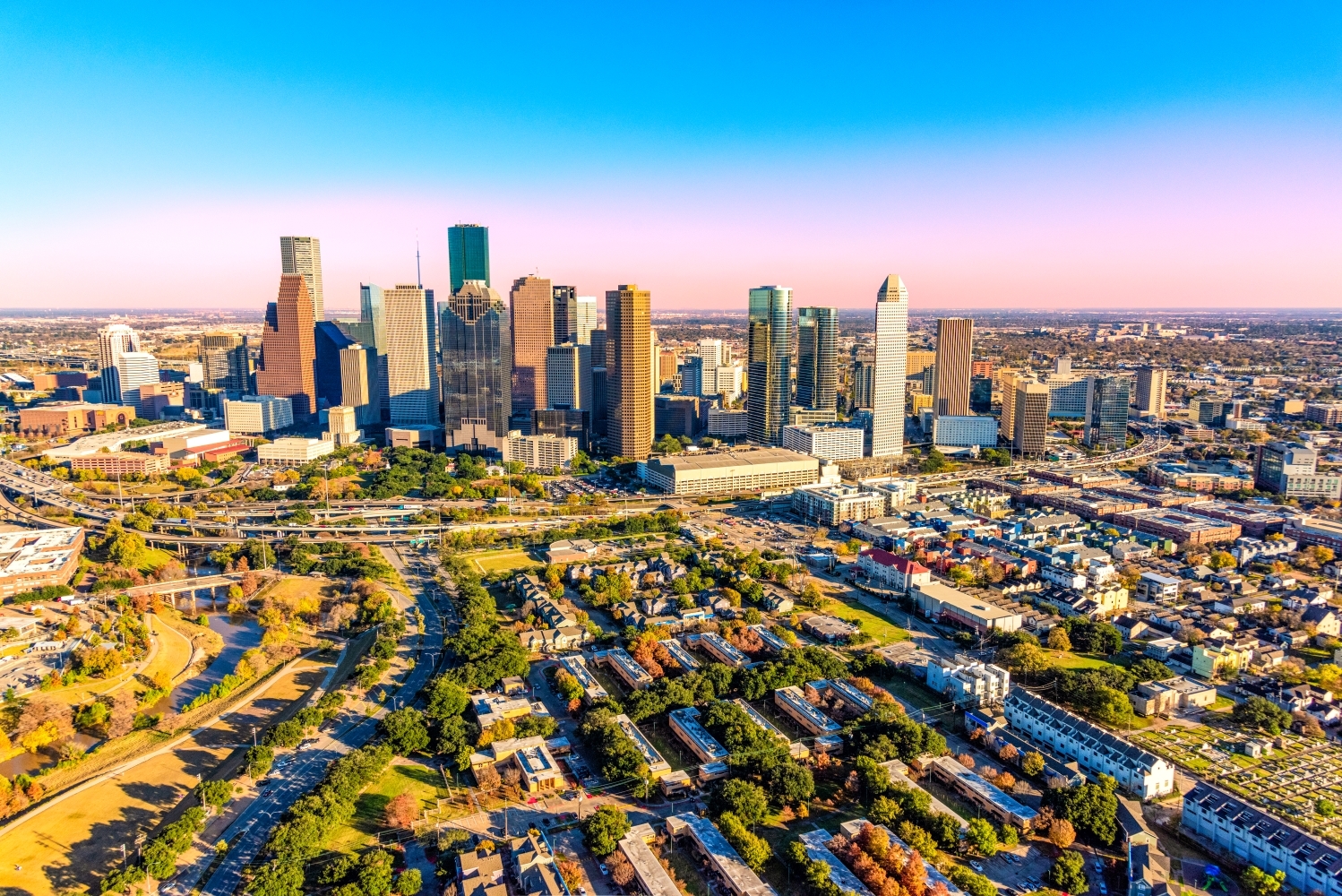 |
| Photo: PODS |
International immigration in the past decade has contributed to explosive population growth here, making Houston one of the most ethnically diverse big cities in America, with more than 145 different languages spoken at home, according to the latest census—about even with New York. No wonder it’s dining is ranked #4 in the country, with a flurry of post-pandemic launches happening now—from food halls like Railway Heights and farmers’ markets to elevated Texan at Wild Oats. The fifth-largest city in the U.S. is also home to the fourth-largest concentration of Fortune 500 companies in the country, and ranks an impressive Top 5 nationally for HQs that call it home. But the city’s ambitious plans are driving rebirth. The recent development of the Houston Spaceport, a hub for innovation, education and commercial spaceflight, is the future of the region’s space industry—and brings us all a step closer to space tourism. For now, Houston’s 22.3 million annual visitors (2018)—of which 3.28 million were international travelers—arrive and depart by more conventional means—at least they did before the city’s #6 most connected airport ground to a halt last year.
18. Columbus
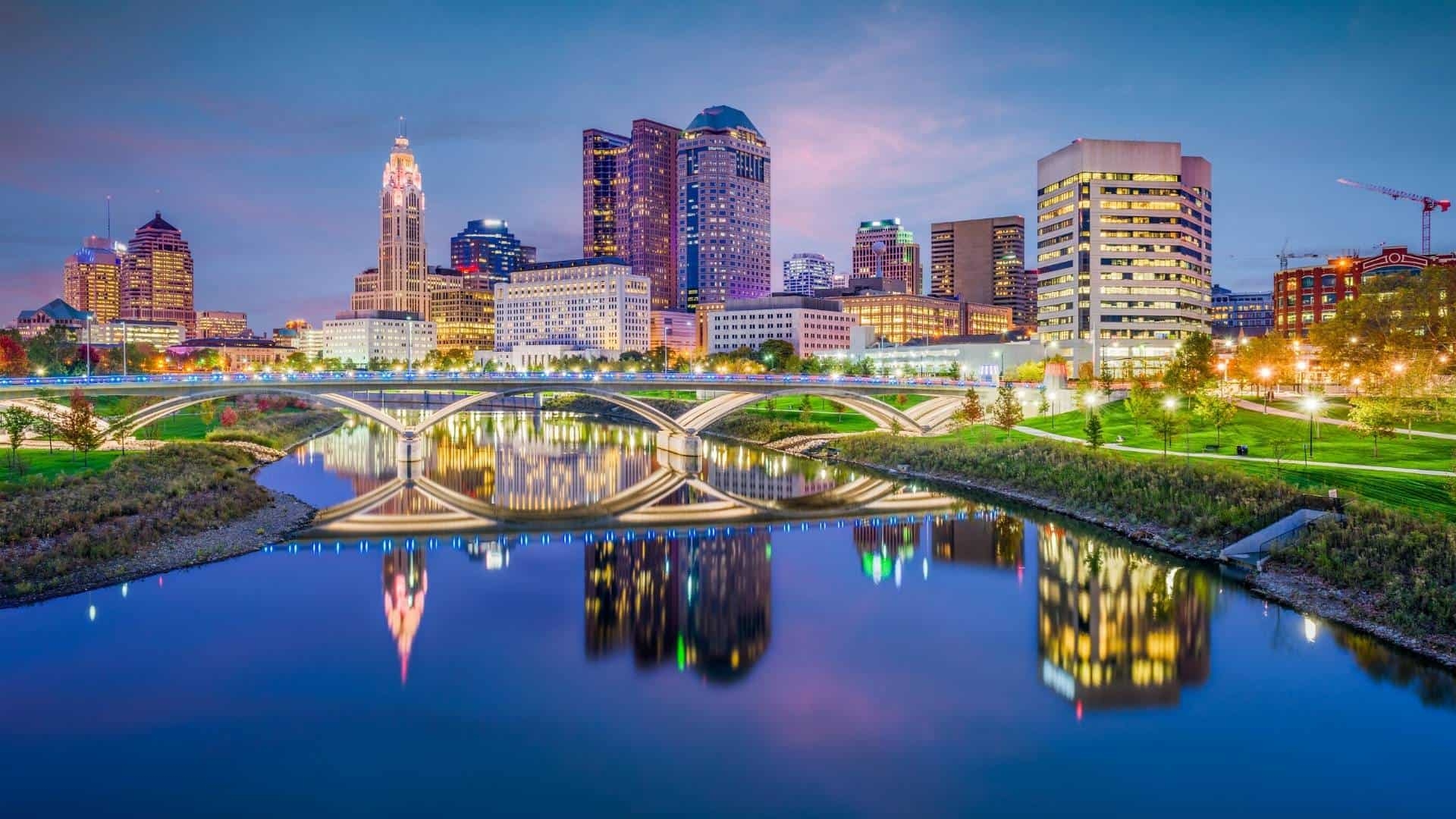 |
| Photo: Trekaroo Blog |
Setting it apart from many Midwest metros, Ohio’s capital and largest city is one of America’s fastest-growing places—a forward-thinking economic powerhouse that’s also home to one of the largest college campuses, Ohio State University (#26 in our University subcategory). And Buckeye football isn’t the university’s only contribution to local culture: with more OSU graduates deciding to stay in town, Columbus is an emerging tech mecca with a thriving arts scene. The city earns a remarkable #8 ranking for Prosperity nationally in 2021, powered by historically low unemployment and its #19 ranking in our Change in Civilian Labor Force subcategory.
Even amidst the pandemic, locals stayed put and insulated, as evidenced by the city’s #8 ranking for Change in Family Income between 2019 and 2020. The well-rounded economy, it seems, is resilient—buoyed by a growing number of start-ups, as well as top employer Ohio State and Fortune 500s (for which Columbus shares a #21 ranking) like Nationwide Insurance and L Brands. So what do locals do when they’re not working? Pre-pandemic, the first Saturday of the month meant Gallery Hop, when galleries would stay open late and performers and artists hit the streets of Columbus’ Short North Arts District.
19. Boise
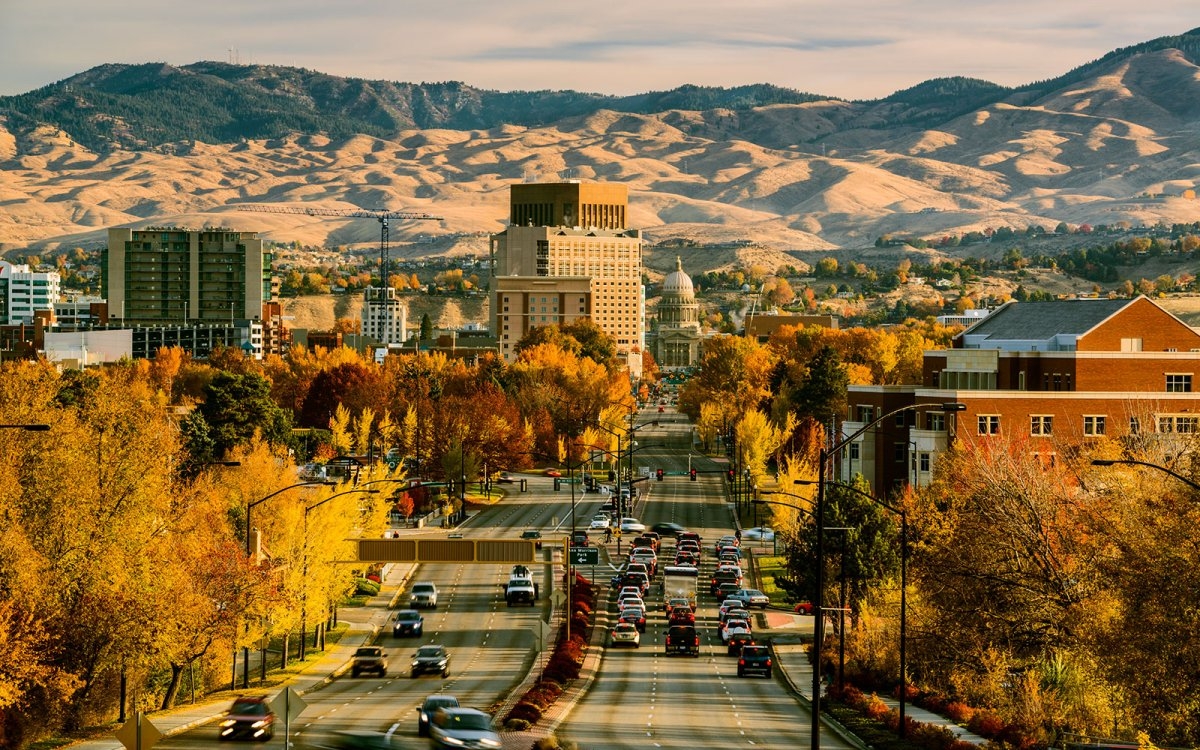 |
| Photo: Williams Homes |
Boise, with an almost 20% population spike in the past decade, is an American West boomtown, where access to the outdoors, a strong economy (thanks to its booming tech sector), and a lower cost of living than many other cities similar in size is drawing people in from all over the country. It’s also the highest-ranking city in our index with the smallest population, so it’s clear things are only starting to roll for what many are calling the “Austin of the North.” It ranks #4 in our Prosperity category, led by the #1 ranking in the nation in our Change in Home Prices subcategory. No other U.S. city’s real estate has appreciated more during the pandemic than in Boise. That makes it not so surprising that the city ranks #16 in our Change in Civilian Labor Force subcategory. The city is a net attractor of the urban exodus from other urban centers. Boise’s tech scene has a lot to do with this population boom, anchored by the tech giant Micron Technology and blossoming in all sorts of interesting start-ups. Also adding to its allure are mountains, a desert and a river all within striking distance.
20. Tucson
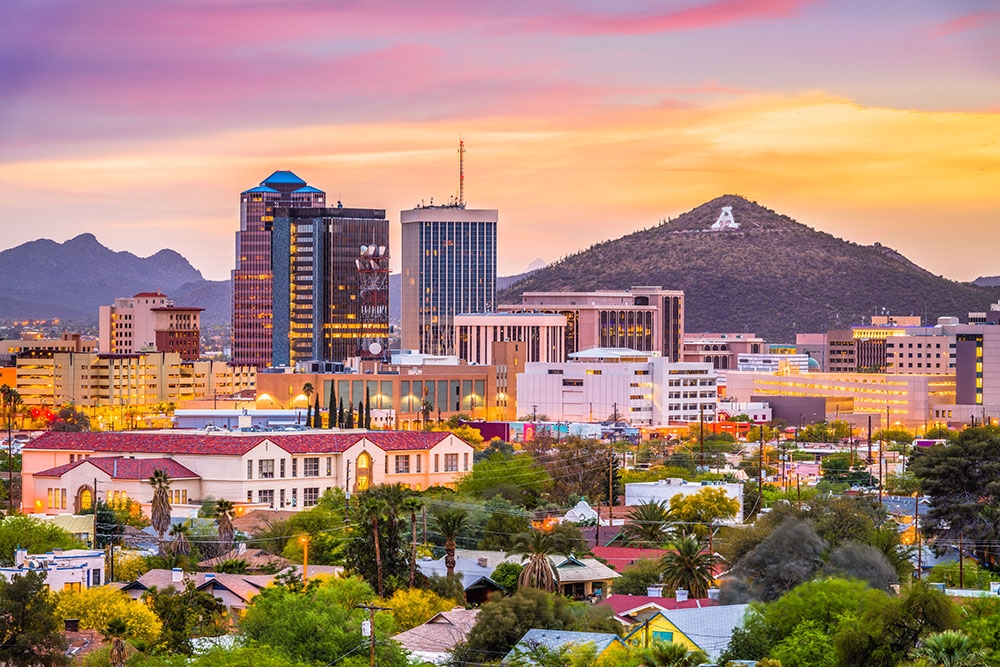 |
| Photo: Vemaybay123 |
Fast-growing Tucson is buoyed by its sense of place, ranking #10 in both our Weather and our Parks & Outdoors subcategories. The city is poised to ascend up future national rankings, due to a torrent of new investment in all manner of green and common space. Its new Sun Link LRT is sure to improve quality of life, creating a focus on fewer cars and more walkability that’s designed to pull the sprawling population together, closer to downtown. Urban innovation that taps its outdoor bounty by increasing access to it is not a hard sell for a town where almost 25% are aged between 20 and 34. You can thank the University of Arizona (ranked #42 nationally in our University subcategory) for the city’s youthful bounce. The desert city is also blooming economically. House prices are rising fast as the post-pandemic migration from larger urban centers powers Tucson to a Top 5 ranking in our Change in Home Prices category. Citizens are also hanging in despite the pandemic’s economic impact, ranking #21 in our Change in Family Income subcategory. All this places the city in the Top 10 in our overall Prosperity category. Good thing, too, given that the local shopping ranks an impressive #17 nationally.
21. Provo
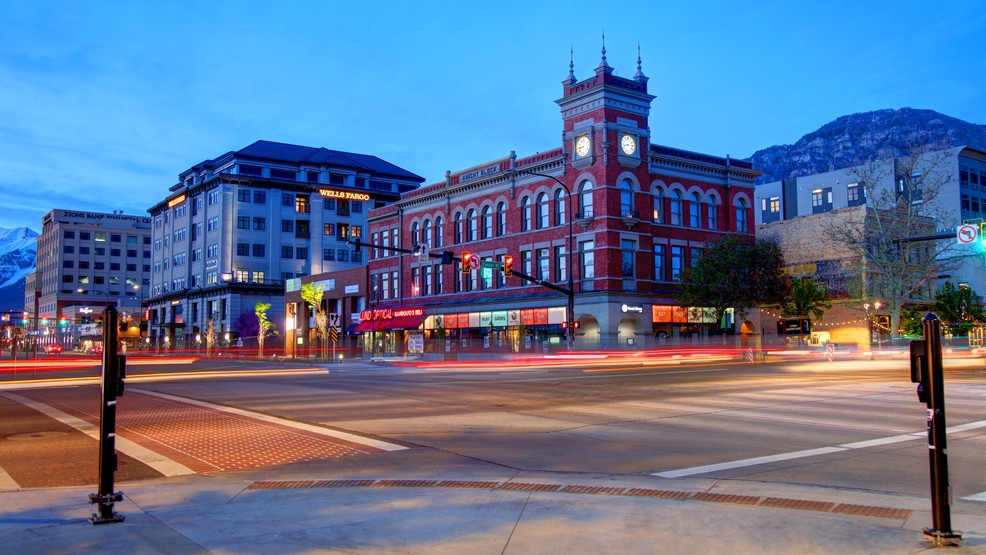 |
| Photo: KJZZ |
With the Wasatch peaks to the east and Utah Lake to the west, Provo—which punches high in our rankings for its small population—is an outdoor enthusiast’s playground. It’s home to Brigham Young University (ranked #34 in our University subcategory) and forms part of Silicon Slopes, Utah’s start-up and tech community. It’s easy access to hiking, river rafting, mountain biking and ski resorts, plus the city’s own 53 green spaces (totaling 2,000 acres, plus 33 miles of trails), earned Provo an impressive #12 overall ranking in our Place category. Provo also ranks Top 3 among the nation’s safest cities. But the real driver of its impressive finish, just outside the Top 20, is the city’s talent and economic performance. Technology, healthcare, and education are among the city’s major industries, with an economy that’s propelled by a highly educated population: Provo ranked #15 for Educational Attainment (with nearly 43% having earned a bachelor’s degree or higher). Supported also by its #2 ranking in our Change in Civilian Labor Force subcategory, Provo ranked #3 in our People category. And talent continues to stream in, as indicated by Provo’s #7 ranking in our Change in Home Prices subcategory
22. Tampa
 |
| Photo: ImmiCA |
While plenty of people tout what Florida doesn’t have — a state income tax — as a key reason to move to the Sunshine State, many young job-seekers are also flocking to Tampa for what the area does have: an affordable cost of living; nearly 80 colleges, universities and technical schools in the Tampa Bay area; and a range of high-profile companies like Raymond James, Citigroup and USAA.
In 2021, the city will also shine as the host of Super Bowl LV, and plans to continue working to appeal for those looking for arts and culture, too.
23. Portland
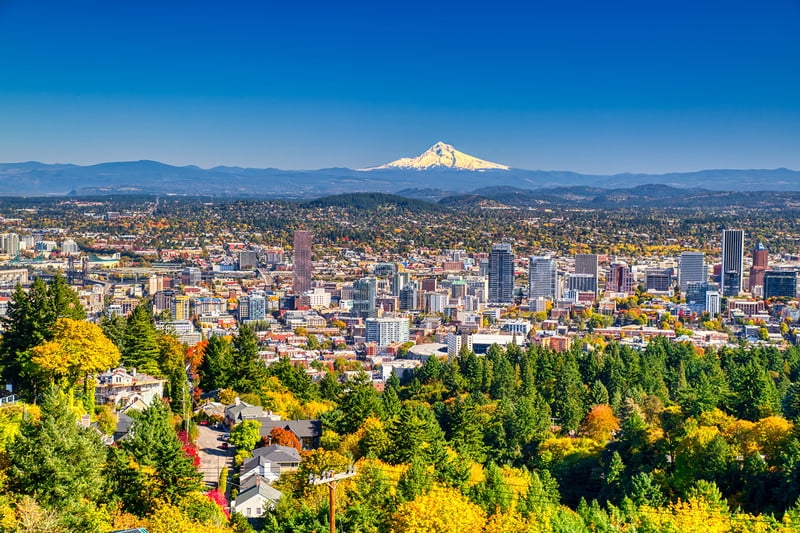 |
| Photo: The Manual |
Portland’s blissful isolation, ambivalence toward established norms and legacy of cooperation and neighborliness—to hew trees and carve out one’s place among the encroaching wilderness—makes this one of the most earnest cities in America. It’s also one of most beautiful, ranking #11 for Sights & Landmarks and #8 for Parks & Outdoors. One of the zingers in the popular TV show Portlandia identified its lampooned target as “a place young people go to retire.” But it’s more like reinventing themselves, taking what was there all along, finding its best parts and doubling down on what works. The proof of its people is in Portland’s performance: its citizenry ranks #17 for Educational Attainment. After a healthy population growth pre-COVID (almost 8,500 people moved to town in 2018 and 2019), the city held on to those citizens during the pandemic, ranking #38 nationally in our Change in Civilian Labor force category. Portlanders work hard to play hard. The city ranks Top 10 in the country for its lively Programming, including its restless restaurant scene. But Stumptown (referring to a logging past) isn’t a hedonistic pacifist. As the eyes of the world focused on the city’s battle against shadowy federal military deployed there to quell Black Lives Matter and social justice protests, Portlanders once again forged their reputation as an uncompromising citizenry.
24. Raleigh
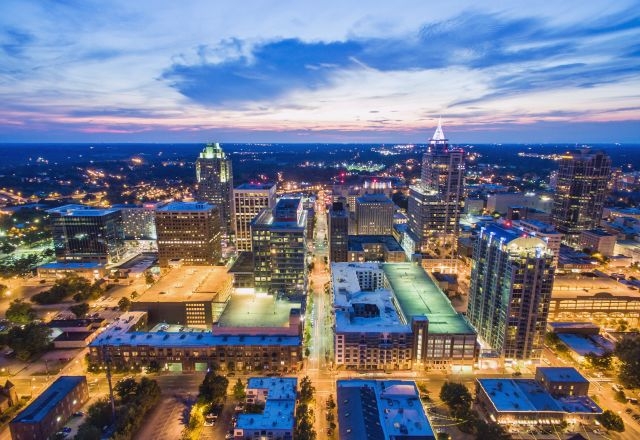 |
| Photo: Universal Commercial Capital |
The City of Oaks checks all the boxes for a bright, ambitious city of the new American South. Raleigh is part of North Carolina’s Research Triangle, one of the country’s largest and most successful research parks—think high-tech and biotech, along with advanced textile development. Ranked #6 in our People category, with the sixth-smartest citizenry in the nation, Raleigh has been magnetic for talent, delivering on its promise of competitive salaries for most of the past decade. But similar to so many high-flying urban centers, the pandemic hit the region hard. Fortunately, the region is well-positioned for recovery, with its three research universities getting back to recruiting young talent to Raleigh; there’s also been a flurry of hiring in the area, including Amazon as it looks to bring its new delivery facility, in nearby Cary, online. It’s also a great hometown, Top 10 in the nation for Safety and boasting a vividly imaginative culinary scene: Bon Appétit granted one of its coveted Top 10 America’s Best New Restaurants for 2017 to a quirky and beautiful combination brewery, bookstore, flower shop and dim sum restaurant called Brewery Bhavana.
25. Miami
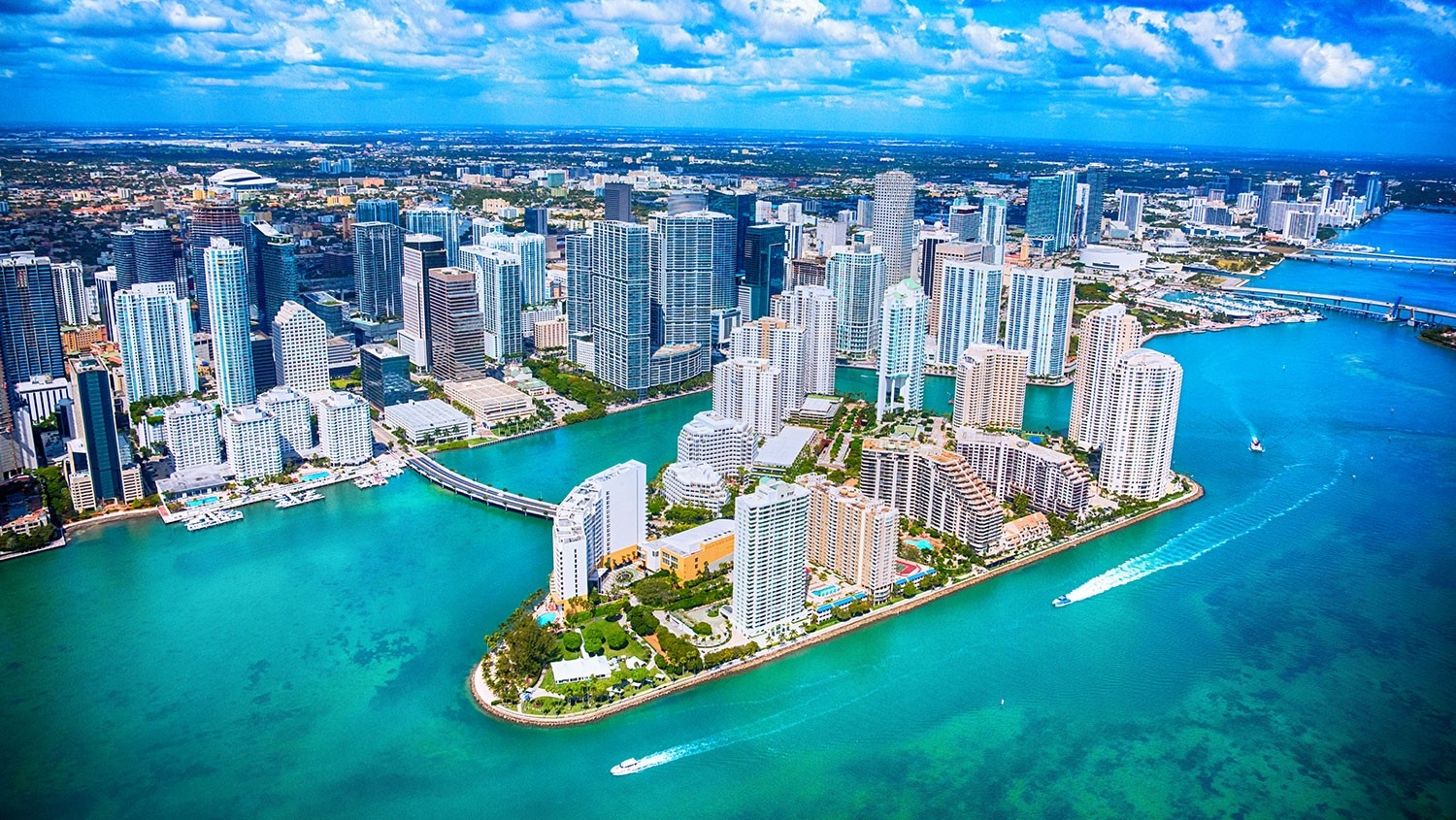 |
| Photo: Billboard |
Miami’s natural attributes have always captured the world’s imagination and crystalised the city’s hedonistic brand. But it’s Miami’s openness to immigrants (and, more recently, the LGBTQ+ community, and, even more recently than that, Silicon Valley migrants) that has Miami ranking #6 in our Promotion category. From prominence on Instagram (#2 nationally) to trending on Google (#7), the city where more than 100 languages are spoken across its households also wants to be the place where the new distributed workforce comes to work from home. Take tech-lusting mayor Francis Suarez: last year he helped erect a billboard near Twitter’s San Francisco headquarters that read “Thinking of moving to Miami? DM me.” Below was his handle. Miami’s historic embrace of a crossroads of the Americas has long provided a business advantage few cities claim. It’s home to one of the largest concentrations of international banks in the U.S., as well as North America’s largest hub—outside of Mexico City, New York and L.A.—of Spanish-language media. It’s also at the crossroads of Latin America, both in geography and in culture: Miami intends to promote its connectivity and globalism, and the region’s selection as a host city candidate for the 2026 World Cup will help.
26. Charleston
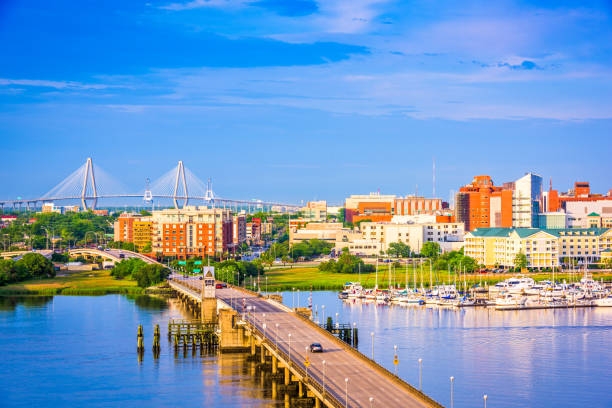 |
| Photo: iStock |
A beguiling fusion of built environment and coastal transition landscapes—golden islands, channels and marshes—Charleston is one of North America’s most architecturally significant destinations, drawing pilgrims from all over the world, propelled by global travel media and the promise of legendary Southern hospitality from an era almost forgotten. In 2020, that hospitality was put to the test: Charleston’s unemployment rate soared while housing prices ended their rapid ascent. The Holy City holds strong, though: it comes in just outside the Top 25. The city comes in at #9 in our important Place category, including an incredible #2 for Parks & Outdoors—trailing only Honolulu among all American cities (with hundreds of thousands fewer residents). A city rich in cultural, natural and military heritage, Charleston nabs a Top 10 spot in our Museums category (#9). Set to open next year, the International African American Museum will illuminate the influential, under-reported histories of Africans and their descendants in South Carolina, highlighting their diasporic connections throughout the nation and the world. The museum’s defining feature will be its location at the historic site of Gadsden’s Wharf. Nearly half of captive Africans forced to North America in the slavery era arrived through Charleston, and today millions of Americans can trace their ancestors here.
27. Charlotte
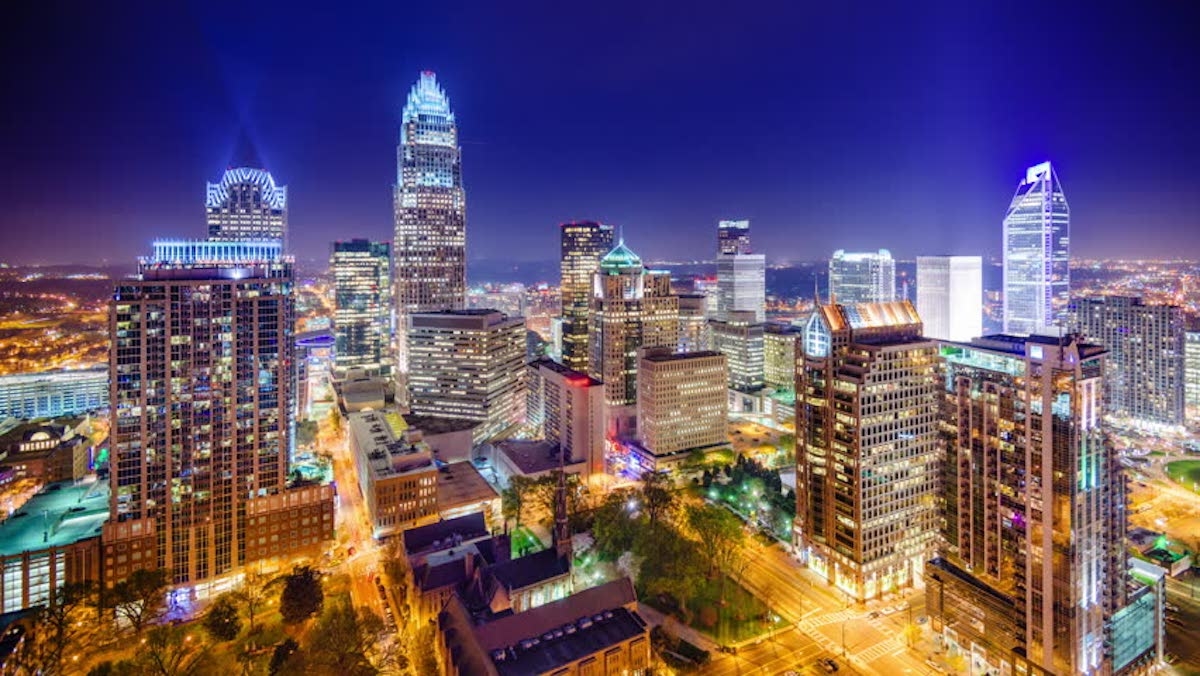 |
| Photo: Northeastern University |
The Old South is up to new tricks in Charlotte, a global banking powerhouse (the second-most important in the U.S. after New York) and tied for the #18 spot in our ranking for Fortune 500 companies in town. Locals in the Queen City are smart, too: Charlotte ranks #36 in our Educational Attainment subcategory. The prosperity is easily accessed and distributed, powered by Charlotte’s #7 ranking for Airport Connectivity. People call their downtown Uptown, but the good news is that it’s all walkable. Beneath its bankerly surface, Charlotte offers unexpected attractions: the NASCAR Hall of Fame, for instance, where you can trace the sport from its moonshine-running roots to today’s multi-billion-dollar powerhouse. Glory Road is a banked ramp featuring historic cars and tracks, and racing simulators let you become a pitstop crew member and see the world from the driver’s point of view. An impressive #22 ranking in our Restaurants subcategory will improve further once the more than three dozen new eateries open in town, including Vaulted Oak Brewing, appropriately housed in a former bank.
28. Salt Lake
 |
| Photo: Universal Commercial Capital |
Combining spectacular natural and built environments, Salt Lake City is no longer just a gateway to the great outdoors but also a welcoming destination with a high cool quotient. The transformation began with the arrival of the XIX Olympic Winter Games in 2002, as the city thawed its reputation as an über-conservative cowboy town with Mormon family values and instead presented a slew of quaint cafés and stylish restaurants. SLC continues to pour millions into development projects and the beautification of its downtown, and the city has matured into an urban experience as much as an outdoor one. Of course, the proximity of the Wasatch Range’s stunning canyons and 11,000-foot peaks is the reason many adrenaline junkies travel and move here. And they work as hard as they play: Salt Lake ranks #13 in our overall Prosperity category, led by its relative resilience to the pandemic’s economic devastation. The city is in the top 10% in our Change in Home Prices subcategory and ranks #26 for Change in Family Income. It’s citizenry brings the smarts as much as the snowboards, ranking #38 globally for Educational Attainment. The University of Utah ensures the brainpower keeps flowing, with its #42 ranking nationally in our University subcategory.
29. Nashville
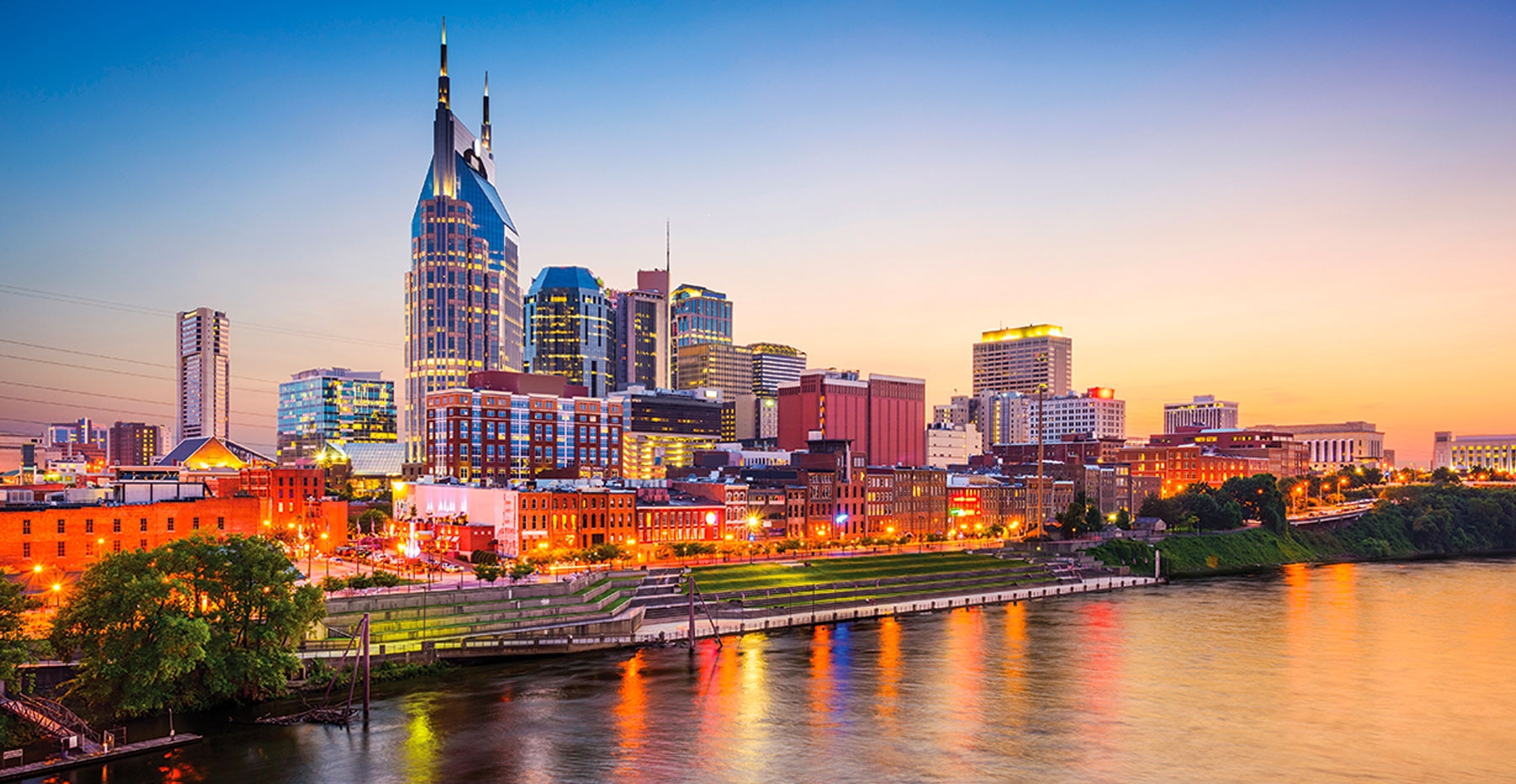 |
| Photo: Jet It |
Nashville has already exported its famous local specialty, hot chicken, to loads of restaurants around the U.S., and plenty are deciding to go straight to the source to try the culinary delight. Of course, they’re coming for more than a recipe. The city’s music industry, coupled with big employment opportunities in healthcare, education and insurance, make the city an ideal place to work and play (or just listen).
The city has recently welcomed the major addition of Amazon’s East Coast logistics hub, a project that will create 5,000 jobs. While the city, like others, felt the fallout of COVID-19, its pre-pandemic reputation makes it likely that the lights of Broadway will be just as bright in the near future.
30. Minneapolis
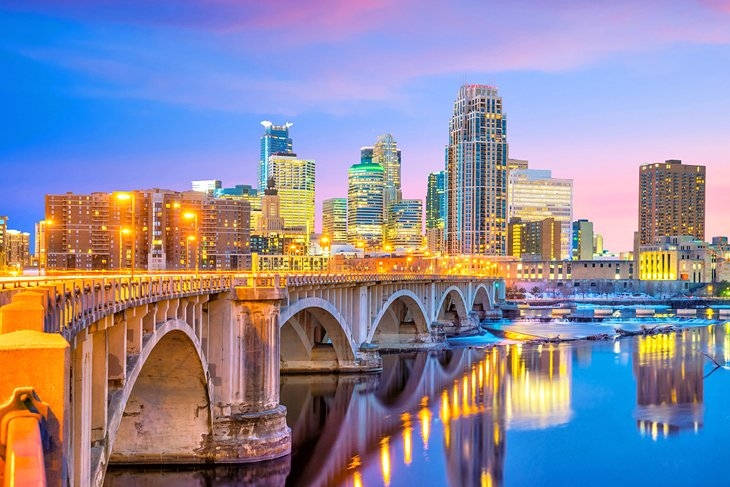 |
| Photo: PlanetWare |
As the site of the George Floyd murder at the hands of local police officers that sparked a global movement against systemic racism and police violence, Minneapolis has become a household name. In addition to their vital role in a fight for justice, residents have long advocated for their city, the results of which can be seen in numerous parks, bike trails and placemaking along a prime location on the mighty Mississippi. With 18 Fortune 500 companies—the most per capita of any American metro area—Minneapolis scores an impressive #9 in our Fortune 500 subcategory. The highly educated workforce (ranked #12 in the country for Educational Attainment) enjoys easy access to the rest of the world via Minneapolis–Saint Paul International Airport (#13 for Airport Connectivity). With a #30 ranking for Programming (including #23 for Nightlife), the city’s heart still belongs to beloved hometown recording artist Prince, whose suburban home and studio, Paisley Park, opened as a museum in 2016. The city has a long way back from a trying 18 months, with its ranking in our Change in Civilian Labor Force subcategory sitting in the bottom 10% nationally, and the subsequent sag in demand for housing pushing real estate prices lower.
31. Kansas
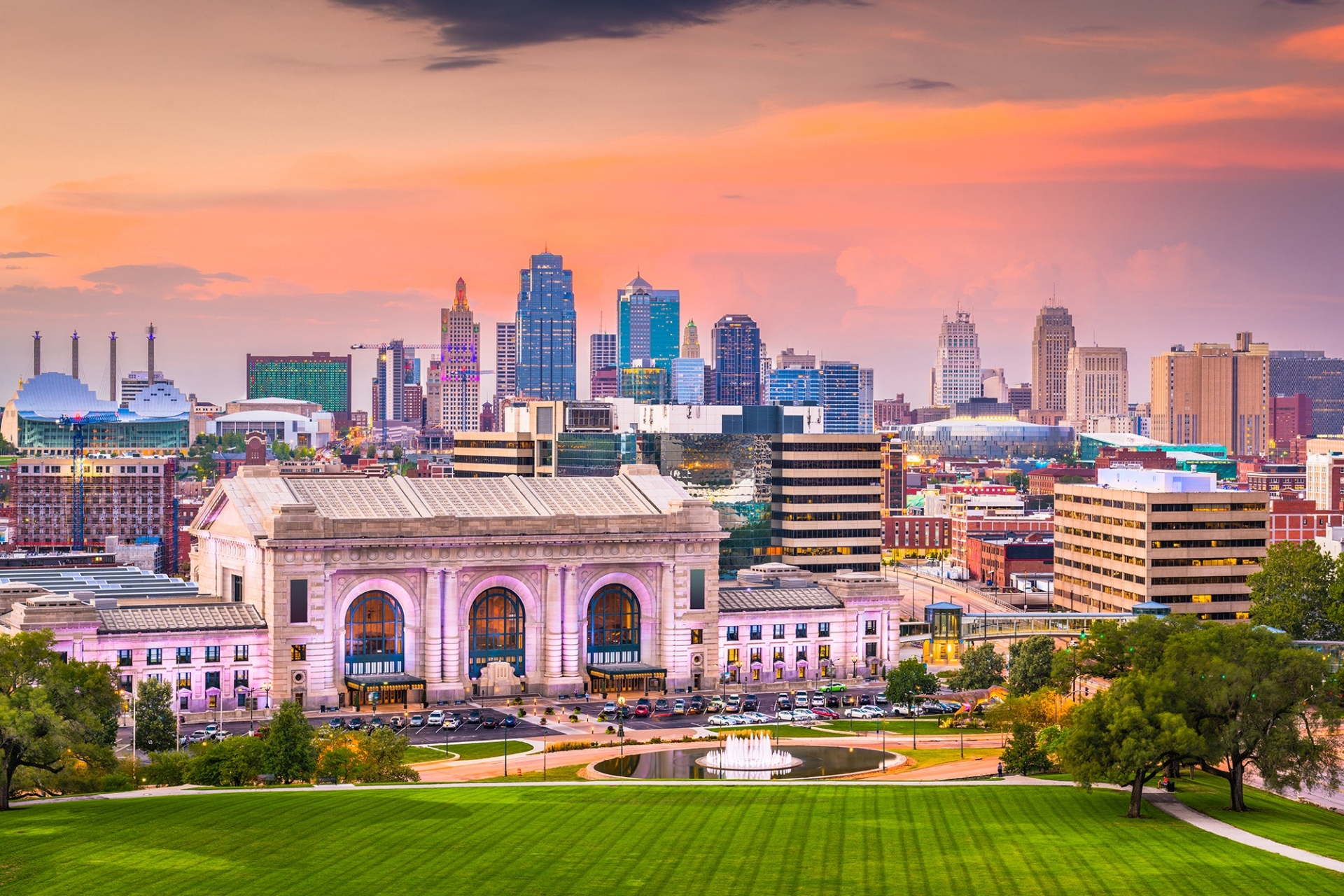 |
| Photo: Vogue |
Affordable yet packed with culture, sports and plenty of delectable food, Kansas City offers a perfect balance of big city amenities like great jobs and a healthy economy combined with an easygoing Midwestern vibe. Routinely ranked as one of the best cities for working women, KC boasts strong showings in healthcare and government, but it also has a burgeoning tech scene, which is in large part thanks to it being the first home of the Google Fiber network. The economic resilience of the city meant that it avoided the pandemic’s full impact on its labor force. Kansas City ranks #33 in the nation for Change in Unemployment Rate and an impressive #13 in our Change in Civilian Labor Force subcategory, meaning locals stayed in the city. This city is tough to leave, and reopening means more opportunities to visit the Nelson-Atkins Museum of Art or the American Jazz Museum. Besides the good weather (which ranks at #33), Kansas City also makes a perfect nesting spot for young professionals and families of all shapes and sizes due to its affordability, increasingly diverse population and world-class universities like Kansas City Art Institute and UMKC. The city ranks #27 for educated citizenry.
32. Sacramento
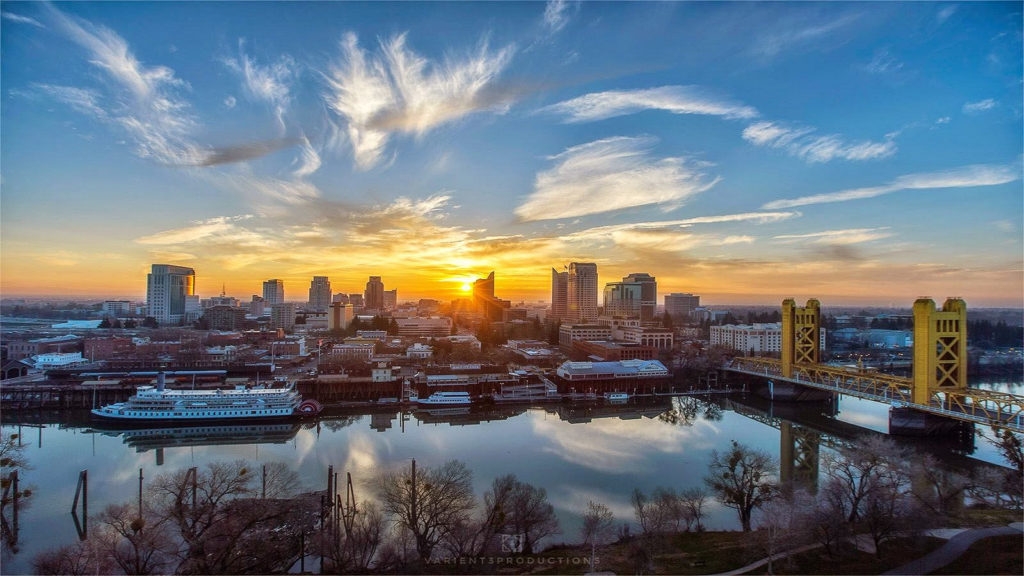 |
| Photo: NEXTAFF |
California’s state capital is peaceful and beautiful, ranking well for its natural attributes, including epic weather (#13) courtesy of its Mediterranean temperatures. Although traditionally one of the Golden State’s wealthiest cities, the pandemic has ravaged it economically. The city ranks #83 in our Change in Unemployment Rate subcategory and, not surprisingly, household income plummeted (ranking #68 in Change in Family Income). The City of Trees—residents claim more trees per capita here than anywhere besides Paris—isn’t a stranger to cataclysms: the Great Conflagration of 1852 burned 40 square blocks of the fledgling city, leaving what is today called Old Sacramento, with its cobbled streets, historic buildings, steam-hauled trains, horse-drawn carriages and the western terminus of the Pony Express. Hokey? Maybe, but it undoubtedly contributes to the city’s rising visitor numbers—at least before COVID-19 hit. Some help from Mother Nature has stewarded the city toward declaring itself America’s “Farm to Fork Capital,” surrounded by fertile farms. Sacramento’s restaurants are only happy to tap the localism. Taste it for yourself at La Cosecha in Cesar Chavez Plaza and discover why Time magazine recently declared Sacramento “America’s most diverse city.” With its highly educated citizenry, California’s capital ranks an impressive #25 in our key People category.
33. Colorado Springs
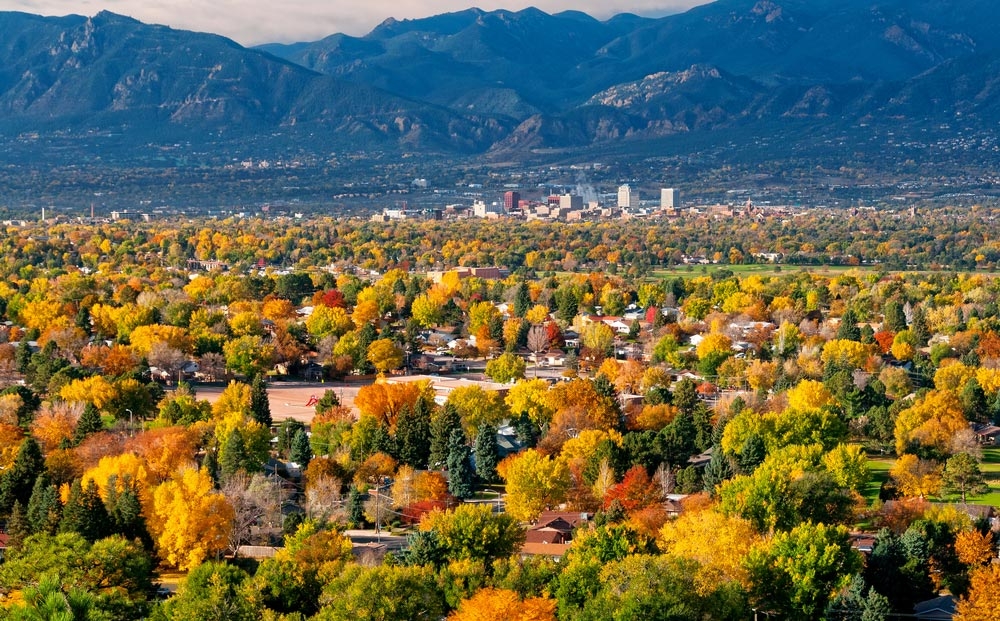 |
| Photo: Extra Space Storage |
Denver makes plenty of well-deserved headlines as a premier place to live, but Colorado Springs is giving the capital a run for the money — literally. The cost of living in Colorado Springs is approximately 15 percent lower than in Denver, and employment opportunities in healthcare, construction and tourism have all been increasing in recent years.
What’s nearby is equally as important as what’s within the city limits, too. From hiking and biking trails in the Garden of the Gods Park to the notorious white-knuckle drive up Pikes Peak, the city is a gateway to natural beauty. Additionally, Colorado Springs ranks among the top 25 cities for year-round clean air, according to the American Lung Association.
34. Albuquerque
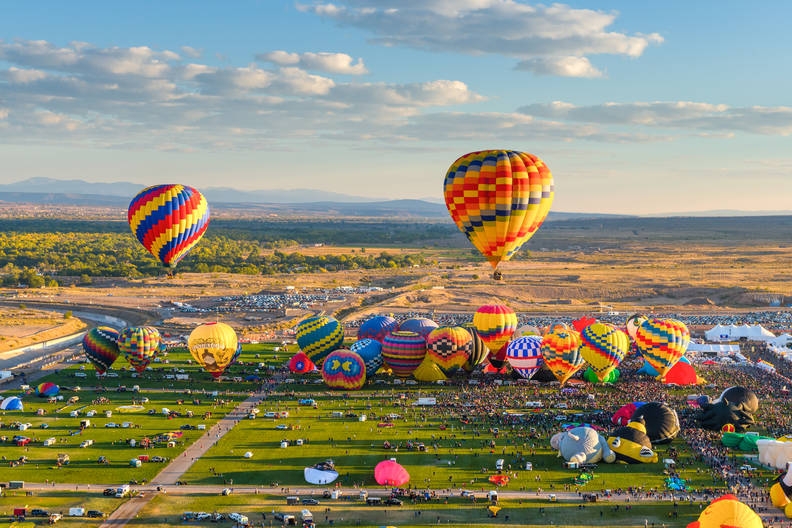 |
| Photo: Thrillist |
Diverse cultures, authentic art and dynamic traditions have helped shape a centuries-old story in Albuquerque. There’s the vintage neon glow of Route 66, the pink hues of the Sandia Mountains at sunset and the cottonwood bosque of the Rio Grande. ABQ ranks #46 in our Product category—indicative of deep infrastructure and local investment—including a #19 ranking in the Museums subcategory. In a city rich in cultural heritage from Spain, Mexico and, of course, its Indigenous Peoples, the architecture is diverse. The cuisine is also influenced and inspired by a colorful (and spicy) palate: green and red chiles are staples—even in desserts. Despite this daring gastronomy, people still won’t believe you when you tell them that Albuquerque ranks #38 for Restaurants in America. ’Burque, in local parlance, is also a cultural hot spot, stacked with more than 100 galleries, a symphony orchestra, theaters and even an opera scene that’s getting national attention. It’s shopping, ranked #16 in the country ahead of places like Boston and D.C., may be even more surprising than the culinary scene. Small wonder new residents are pouring in, pushing ABQ’s ranking for Change in Home Prices to #17 nationally, just slightly ahead, and directly influenced by, the #14-ranked Weather.
35. Durham
 |
| Photo: Oil and Marble |
Durham is one of America’s top college towns and at the heart of it is Duke, a private research university that has a global academic reach and counts among its game-changing alumni Melinda Gates and Apple Inc. CEO Tim Cook. Duke ranks #7 in our University category. In a city that ranks #8 for Educational Attainment and #35 for Weather, it’s not surprising that the 55-acre Sarah P. Duke Gardens and lively neighborhoods like Rockwood and South Square are mere steps away from campus. And just as Duke University connects Durham to the world, Raleigh-Durham International Airport, a 20-minute drive from campus, puts this small North Carolina city on the flight paths of nine carriers. With 400-plus nonstop flights per day to more than 50 destinations (before the pandemic) and its Refresh improvement program in full effect, this facility earns Durham the #29 spot among American cities in our Connectivity subcategory. Middle of the pack in terms of Fortune 500 companies that call the city home, Durham performed admirably amidst the pandemic lockdown, ranking #19 in our Change in Family Income subcategory and in the top half of the country for Change in Unemployment Rate (#46).
36. North Port
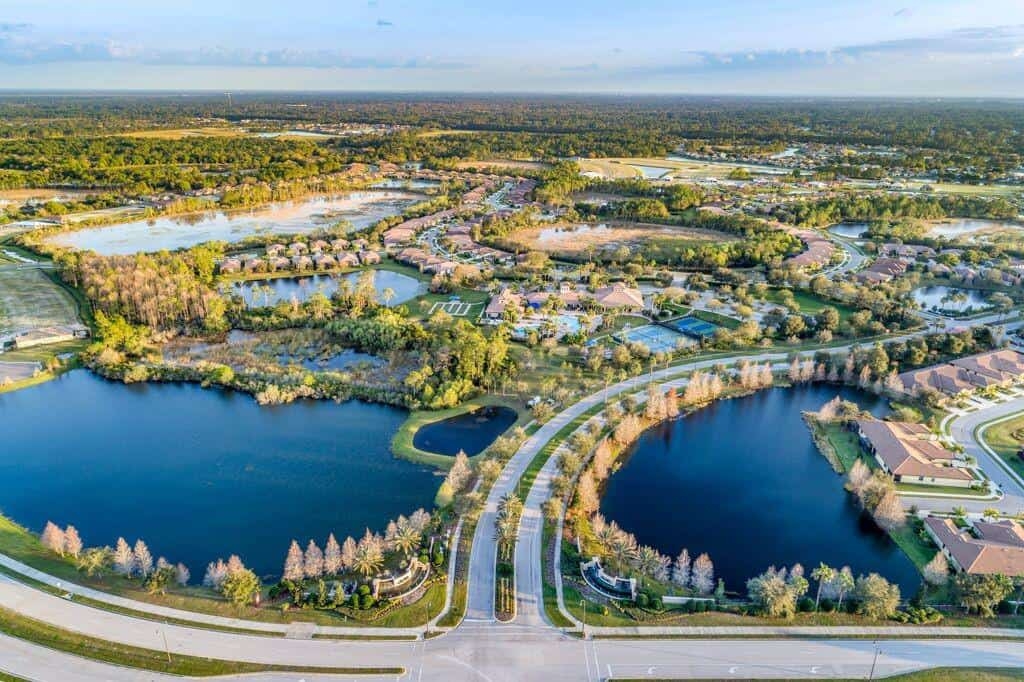 |
| Photo: Sarasota Homes |
Sarasota County’s North Port has the distinction of being the only metro in Florida to have an entire state forest within city limits. When they’re not hiking, biking or horseback riding in the 8,600-acre Myakka State Forest or in the city’s other 400 acres of parkland, residents are canoeing or kayaking along the Myakka River or North Port’s 80 miles of freshwater canals. Then there’s Warm Mineral Springs Park, a peaceful pond with up to 51 minerals and a year-round temperature of 85 degrees. Combine North Port’s natural attributes with a balmy clime (ranking #46 for Weather), plus one of the lowest crime rates in the nation, at #2 (behind only the fellow Floridian city of Cape Coral), and the Sunshine State city lands in our Top 25 for the important Place category (#16). Its finances are healthy: the 2019 opening of CoolToday Park, the Atlanta Braves’ spring training facility, is expected to pump millions into the economy over the next decade, while the West Villages community is an economic mainstay. The city is a mini economic dynamo, ranking #5 for Change in Unemployment Rate (basically adding jobs during the darkest days of the pandemic), while growing incomes (ranking #9 in the country for Change in Family Income).
37. Cincinnati
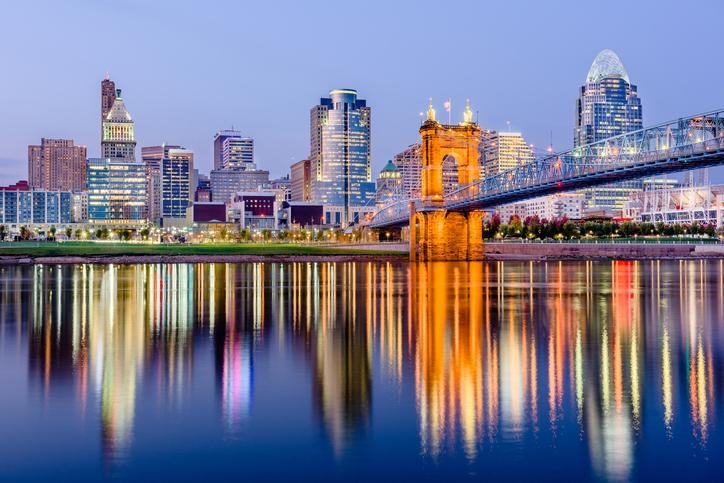 |
| Photo: Blank Rome |
Cincinnati has been simmering just under the surface of mainstream urban vibrancy for a few years now, but in 2018 it leapt into the Top 10 on the list every place wants to be. At #8 on the New York Times 52 Places to Visit in 2018, Cincinnati earned some enviable and well-deserved awareness, particularly for its programming strengths. It ranked high in our 2021 report as well: the city is #32 for Programming, led by #27 for Restaurants and #28 for Nightlife. The architecturally glorious 140-year-old Music Hall recently reopened and is home to the symphony, ballet and opera; it joins an expanded Ensemble Theatre Cincinnati and a new home for the Cincinnati Shakespeare Company to give the Over the Rhine neighborhood real cultural chops. The city ranks #31 for Attractions and, post-pandemic, it’s poised for continued ascent, starting with the new home of MLS team FC Cincinnati in the West End as the anchor for a destination neighborhood—a new Wrigleyville or D.C.’s The Wharf. The city’s impressive #7 Prosperity ranking nationally proves the power to deliver on its new hometown aspiration, led by the 10 Fortune 500 companies that call it home and that help rank Cincinnati #16 in that category.
38. Albany
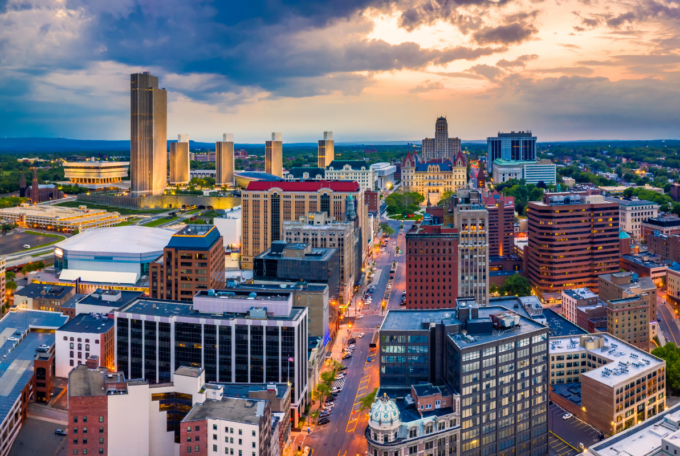 |
| Photo: Wide Open Roads |
Anchored on the shore of the Hudson River, Albany holds the political power despite being overshadowed by that other New York city downriver. Incredibly connected by road, rail and the #63-ranked airport in America, Albany offers a prosperous place to put down roots, resulting in the second-best national ranking in our Change in Family Income subcategory. Not surprising, the state capital attracts an educated citizenry (#24 in our Educational Attainment subcategory). It has also attracted talent throughout the pandemic, likely from New York City, which ranked it #14 nationally in Change in Civilian Labor Force. But Albany is not all politics, though—it’s also a capital of culture, and it boasts an enviable central location, with the Berkshires, Adirondacks and burgeoning Finger Lakes Wine Region—and, yes, the Big Apple—all just a few hours away. Running the Empire State may be big business, but Albany’s also a college town, home to a State University of New York campus that helps the city earn a #26 ranking in our University subcategory. Albany prides itself on its history, and its 18th- and 19th-century homes and compact, walkable core let visitors and locals take to the streets, enjoying an emergent dining scene that’s poised for big things post-pandemic.
39. Portland
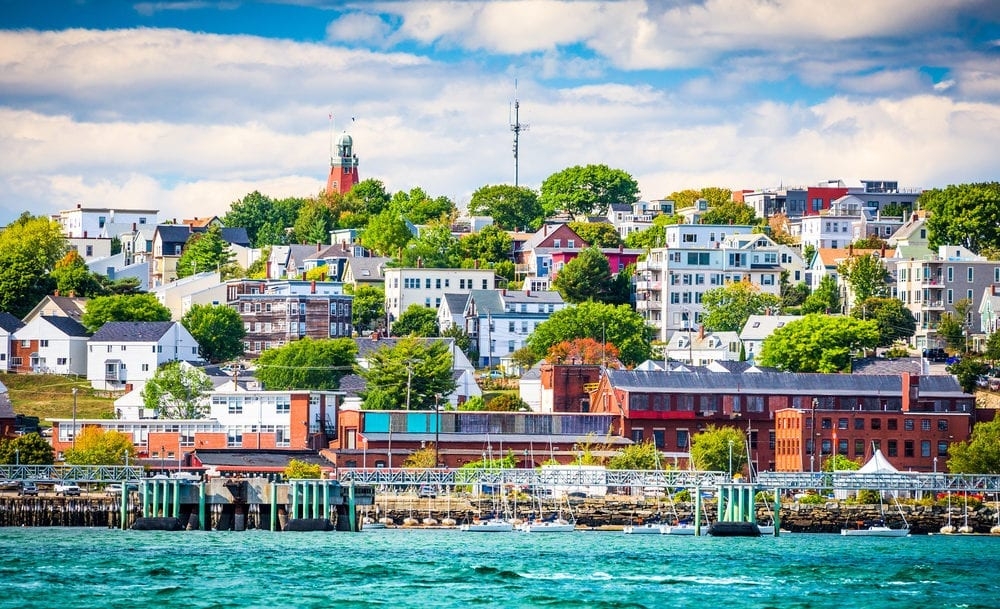 |
| Photo: Newagen Seaside Inn |
In 2014, Portland, Maine, decided to officially declare what pretty much everyone knew. “Yes. Life’s good here” is a patented city brand that some might interpret as a little smug, if it weren’t for the fact that Portland keeps on working to make life even better. It being the smallest city, by population, among the Top 50 in our ranking is just one more confirmation. The city ranks #9 for our Parks & Outdoors subcategory, as part of its #42 ranking in our Place category, a measure of the natural and built environment. There are six unfairly picturesque lighthouses in the area, and the city’s weathered wharfs, cobblestone passageways and historic buildings thrive in the fresh salt air, so much so that its waterfront Commercial Street was declared one of the 10 best streets in the country by the American Planning Association. That this classic American urbanism can be enjoyed without looking over your shoulder (the city is the 22nd-safest in the nation) just adds to Portland’s magnetism. And people are coming, even during the pandemic. This mighty mite ranks #12 nationally in our diverse Prosperity category despite a lack of Fortune 500 companies, and home prices are rising (#14 nationally).
40. Madison
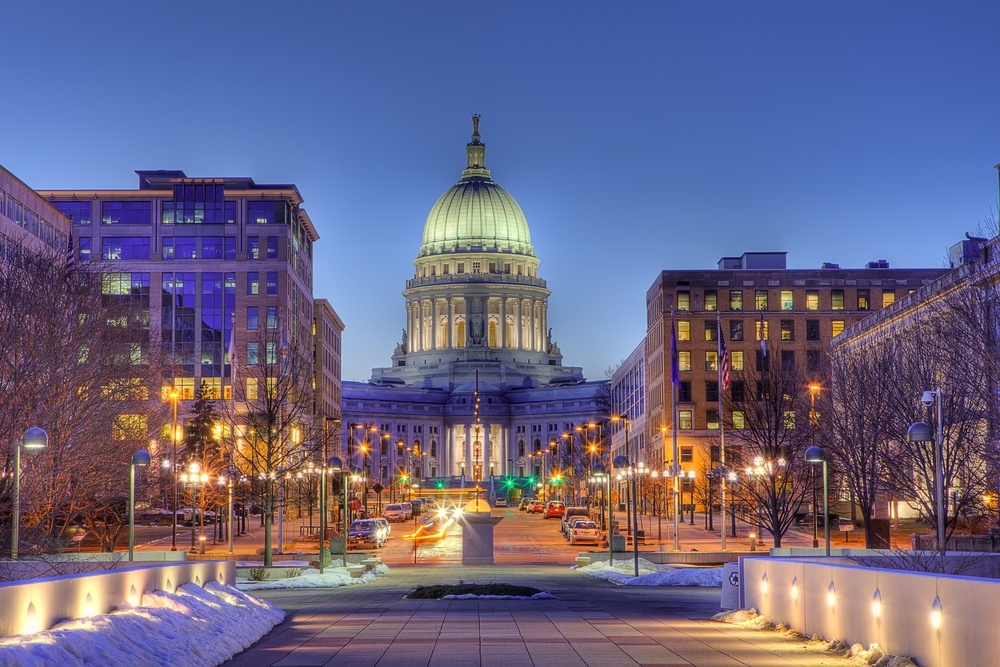 |
| Photo: NBC15 |
Madison’s enviable position as both capital of Wisconsin and the site of the state’s largest university has certainly fueled its livability in previous rankings, buoyed by high-paying work, middle-class power and low unemployment. Unfortunately the city has been decimated by the pandemic, tumbling out of the Top 100 for our key Prosperity category (#102), skewered by falling family income and subsequent falling home prices. The good news is that most of the population has remained in the city, riding out the nightmare in a place that had one of the nation’s lowest urban infection rates in the early days of the pandemic. The students will be back for the start of the 2021 school year, and this hive of healthcare, IT and manufacturing powered by pipelines of talent out of the University of Wisconsin (and the symbiotic, sustainable relationship between academic infrastructure and economic performance it creates) will resume its ascent. Indeed, Madison has always boasted among the most educated citizens in the country. This year, the city ranks #7 nationally for Educational Attainment. With a typical Millennial population approaching 30% (according to a recent Brookings study), Madison is poised to welcome even more with its affordable housing and employers eager to hire.
41. Orlando
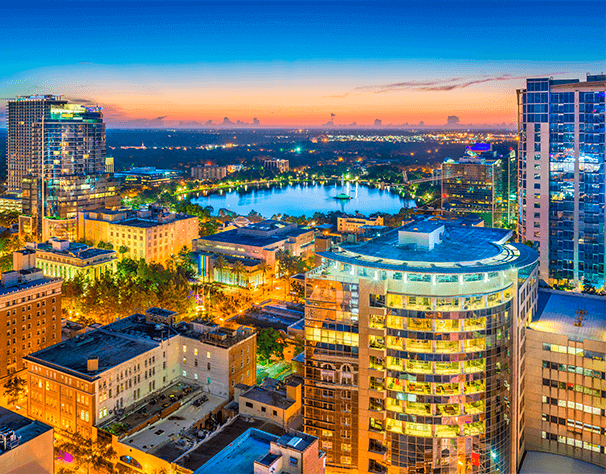 |
| Photo: Iconic Workspaces |
Being the largest city in a region that generates more than $60 billion in tourism-related revenue every year (2020 and ’21 being the notable exceptions) gets you plenty of lift from a rising tide. That’s a lot of visitors with a story to tell if you give them the means to tell it. Orlando knows how to get people talking. Its Top 10 ranking in our Promotion category drove its overall ranking, including collecting the third-most TripAdvisor reviews of any American city. Orlando plans buzzy product releases with military precision—and suffered deeply when confronted with an invisible enemy it couldn’t defeat quickly, its many high-budget, tourism-reliant initiatives cut short, from SeaWorld’s new Sesame Street, rolled out for the show’s 50th anniversary, to LEGOLAND Resort’s debuted Lego Movie World. The city has also expanded its attention beyond family fun. The new Exploria Stadium houses the local MLS men’s and women’s teams, with seats for 25,500 fans, with plenty of placemaking rising around the emerging neighborhood. The road back to its visitor economy glory will be a long one for Orlando, as the one-year change in the city’s housing prices (#101) and unemployment rate (#85) are both open wounds from the city’s pandemic battle.
42. San Antonio
 |
| Photo: Lonely Planet |
The genius of San Antonio is that, ever since 1941, it has sagely leveraged, grown and enhanced its greatest asset and attraction: the River Walk. The idyllic pedestrian promenade along the San Antonio River, extended from three to 15 miles in 2013, is a scenic urban lifeline that connects visitors to everywhere they want to be and anchors the city’s #6 ranking for Attractions among American cities. On one end of the River Walk, there’s the five colonial missions, a UNESCO heritage site and key players in a #17 finish in our Sights & Landmarks subcategory. On the other, the San Antonio Zoo, and in between, the San Antonio Museum of Art, the Texas Golf Hall of Fame and dozens of other curiosities, eclectic stops and riverside cafés. Increasingly, Pearl is a destination within the destination: a mixed-use space in a former brewery, it’s a beguiling blend of retail, dining, offices, a riverside amphitheater, events and a campus of the Culinary Institute of America. Around the esteemed school, a host of grads and chefs have clustered, creating a smorgasbord of choices from Italian to ’cue to bakery to vegetarian cuisine. It may surprise you that San Antonio ranks #8 nationally for its restaurants, an important subcategory that will improve with a dozen high-profile openings this year alone.
43. Milwaukee
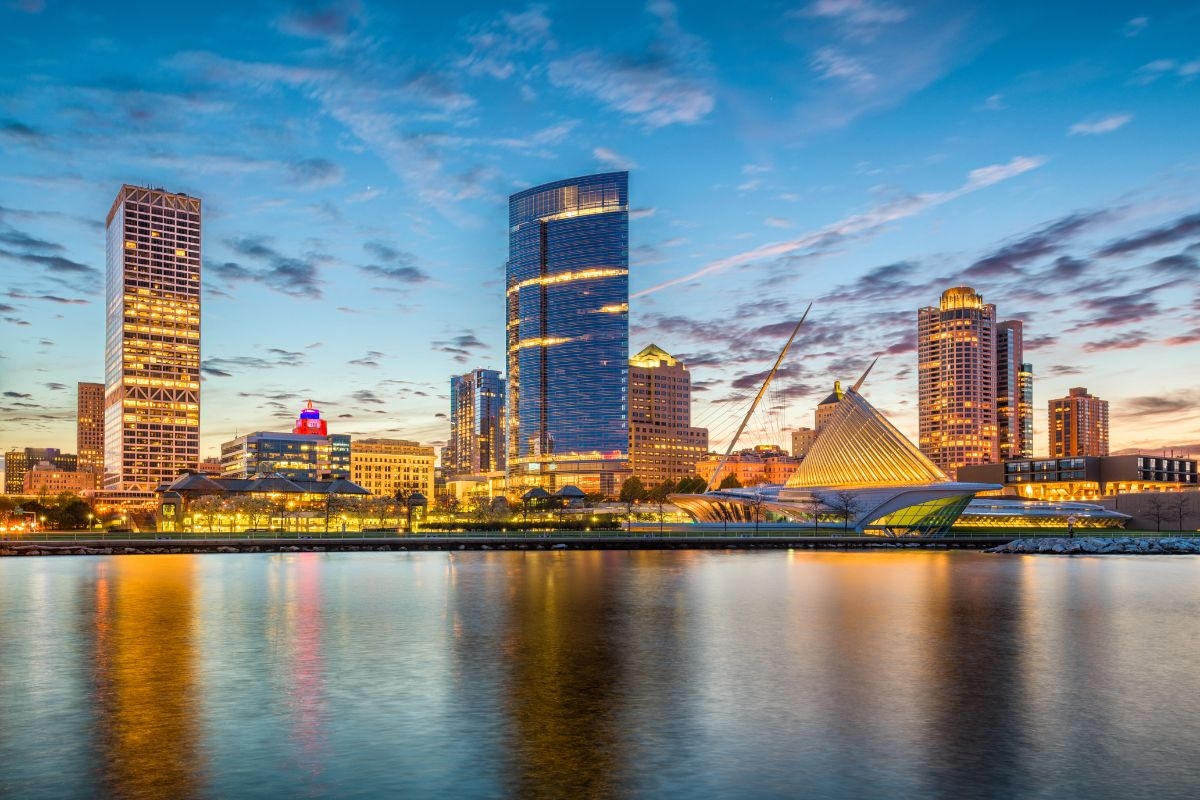 |
| Photo: Enviro-Master |
According to the Wisconsin Department of Tourism, some 23 million tourists visited the Milwaukee area in 2016—and it’s been climbing ever since (pandemic excepted), which resulted in an economic impact of more than $3.7 billion for the city in 2018 alone. So what’s been luring these millions to this urban center in the American Heartland? Sited on America’s third coast, Wisconsin’s largest city combines cherished traditions and modern attitude. It celebrates its beer brewing heritage and offers a vibrant farm-to-table culinary scene—an obvious asset to a city with a century of feeding and brewing for a continent. A jack of all trades but master of none in our categories, the city will fight hard to return to its ascent as a cruise ship destination. In 2019, 10 passenger ships docked here, more than double from 2018. Plans to expand the downtown Milwaukee convention center (the Wisconsin Center) are also moving forward, with construction expected to begin in 2022. The project hopes to accelerate a downtown renewal kickstarted by the Northwestern Mutual Tower & Commons in 2017, Fiserv Forum (the home of the NBA Bucks) in 2018 and, most recently, the BMO Tower, which will house the city’s #21-ranked Fortune 500 companies.
44. St. Louis
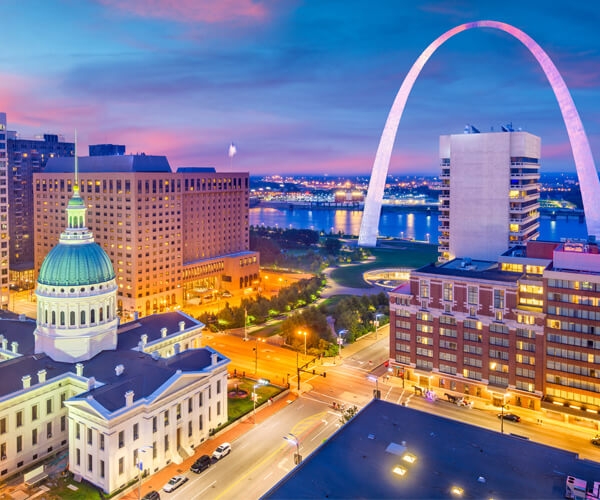 |
| Photo: www.umsl.edu |
America’s gateway to the West has always been an understated city of neighborhoods (ranking #19 in our Sights & Landmarks subcategory) and cultural elegance. It performs well (#18) for nightlife action in bars and clubs (not surprisingly, Miles Davis is a native son), and ranks #23 for Programming, led also by a #21 finish for Restaurants. There’s often a correlation in the rankings between good nightlife and prosperity, and St. Louis is no exception—it ranks #16 for Fortune 500 companies that call the Gateway to the West home. The city’s strategic plans to bolster its ability to attract meetings and events—devastated by the past 18 months—received good news recently when the AC Next Gen Project that will update and expand the America’s Center Convention Complex downtown received approval last summer for $105 million in bond funding from the city. But humankind can’t live by nightlife alone, especially if children are involved, so there’s always the zoo, and there must be a visit to the mind-blowing (for any age) City Museum. Not surprisingly, St. Louis ranks #16 in our Museums subcategory.
45. Indianapolis
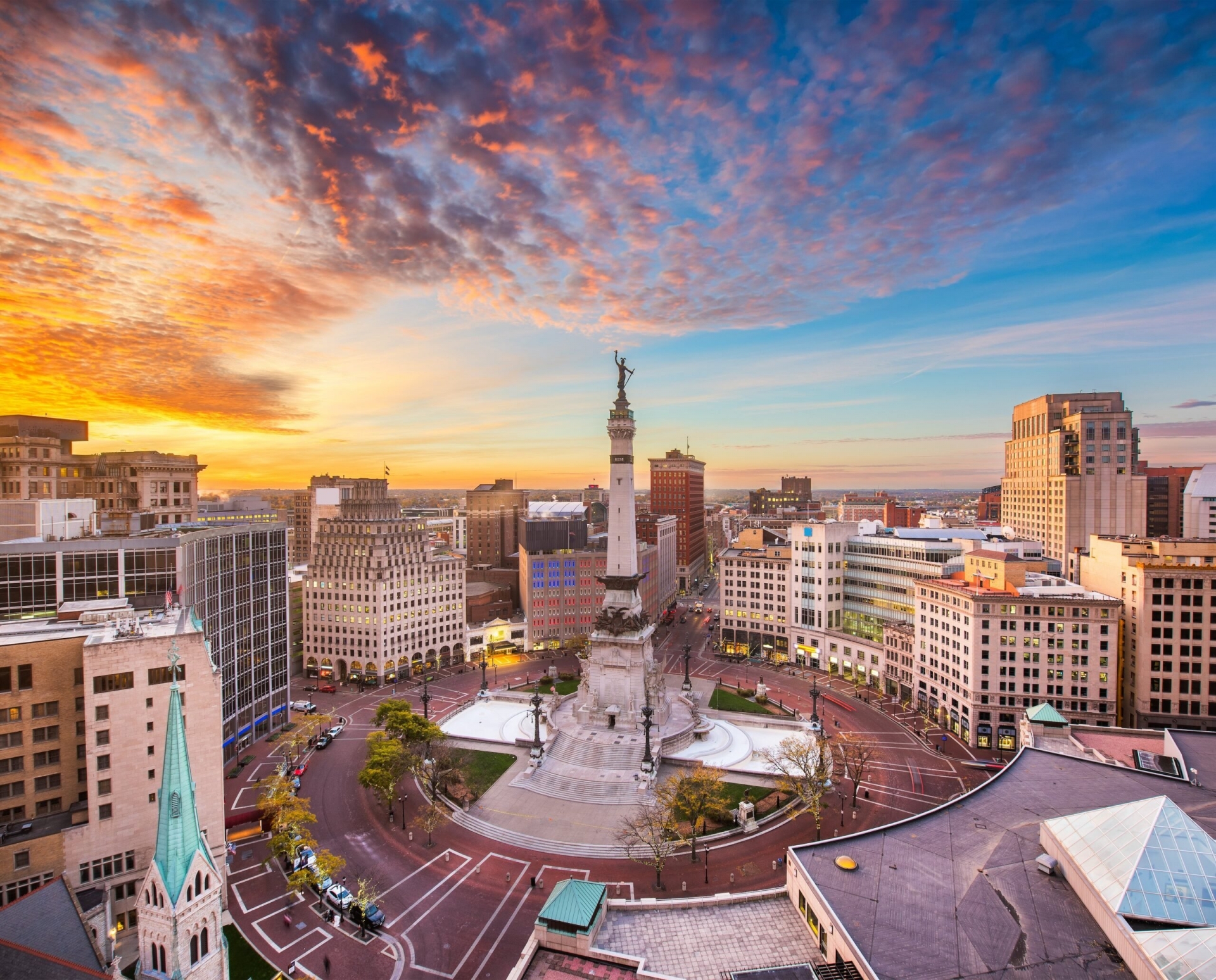 |
| Photo: TravelAwaits |
It’s difficult to overestimate the powerful influence a strong sports brand can have on the perception and profile of a city. Indianapolis might owe its fame to the century-old auto race known as the Indianapolis 500, but this Midwest metropolis has plenty to offer, even if you don’t have a need for speed. Come for the sparkling airport, world class cultural institutions and bustling nightlife, stay for affordable neighborhoods and family-friendly entertainment. True to its reputation as the capital of speed, Indianapolis is home to workers who fuel a diverse economy anchored by three Fortune 500s—ranking it at a tie for #31 nationally—and some of the shortest commutes of any metro area. Indy has plenty of attractions to call its own. Destinations like the picturesque Canal Walk promenade, the Indianapolis Museum of Art and the Children’s Museum of Indianapolis (the largest institution of its kind in the world) helped earn Indy an impressive #13 rank in the Attractions subcategory. Urban vibrancy gets a boost with the $300-million transformation of what was once the largest Coca-Cola bottling facility in the world into the Bottleworks District, featuring the new Bottleworks Hotel and a new home to Indy’s best coffee roasters, florists, brewers, food purveyors and artisans.
46. El Paso
 |
| Photo: SecurCare Self Storage |
Safe (the “Safest City in America!” if you listen to loud and proud former mayor Dee Margo, even though we have it at #5 in our subcategory), progressive and increasingly basking in the fruits of its 2012 $500-million bond initiative that funded a children’s museum, new arena, cultural center and more—all downtown—the city is also cooking in the literal sense, ranking #39 for its culinary scene. But the boom is tapping El Paso’s history, too. “The city mothballed its streetcar system in the 1970s,” said Destination El Paso CEO Bryan Crowe. “We brought back the perfectly preserved streetcars to service our newly expanded medical schools.” Today the streetcar travels a 4.8-mile route in two loops through El Paso’s uptown and downtown areas. Fortified by its roots as a cowboy town, El Paso is leveraging its regional pride by enticing scattered locals back home, while embracing its border-city advantage. A #18 ranking in our Change in Civilian Labor Force subcategory points to a growing population. The city also benefits from its direct ties to Mexico and Latin America, with its population mostly of Hispanic origin (80%). It doesn’t get more Tex-Mex than here, where many residents speak a foreign language—in this case, overwhelmingly Spanish—at home.
47. Baltimore
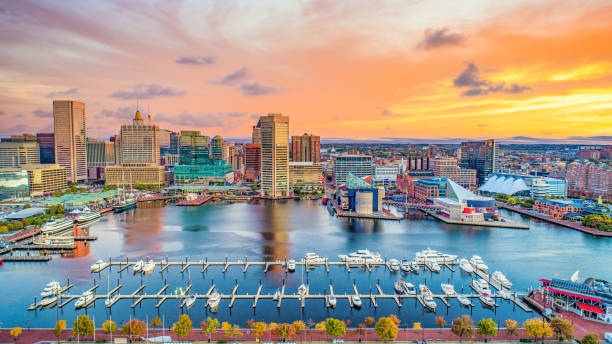 |
| Photo: iStock |
Less than an hour’s commute from Washington, D.C., Baltimore offers a slower pace of life and significantly cheaper housing than its hyper-charged neighbor to the south. But the time to buy into one of Baltimore’s diverse, historic communities may just be right now—home prices in the city reached a 10-year record in July 2020. Baltimore is also home to world-class institutions like Johns Hopkins University (ranked #6 nationally) and the National Aquarium, as well as a quirky culture that makes Charm City a place like no other. Johns Hopkins is Baltimore’s largest employer, and while it may be lacking Fortune 500 company (ranking #70 in our subcategory), Maryland boasts a $35-billion aerospace industry, and the defense contractor Northrop Grumman is a Top 5 employer of Baltimore residents. The city ranks an impressive #15 for Educational Attainment. It also earns a #12 ranking for Museums, and many—from historic ships to the highly acclaimed Port Discovery Children’s Museum—are clustered around the Inner Harbor, which for 50 years has served as a nationwide model for the reuse of post-industrial waterfront. With impressive airport connectivity (#21) and established urban infrastructure, Baltimore is #19 in our vital Product category.
48. Pittsburgh
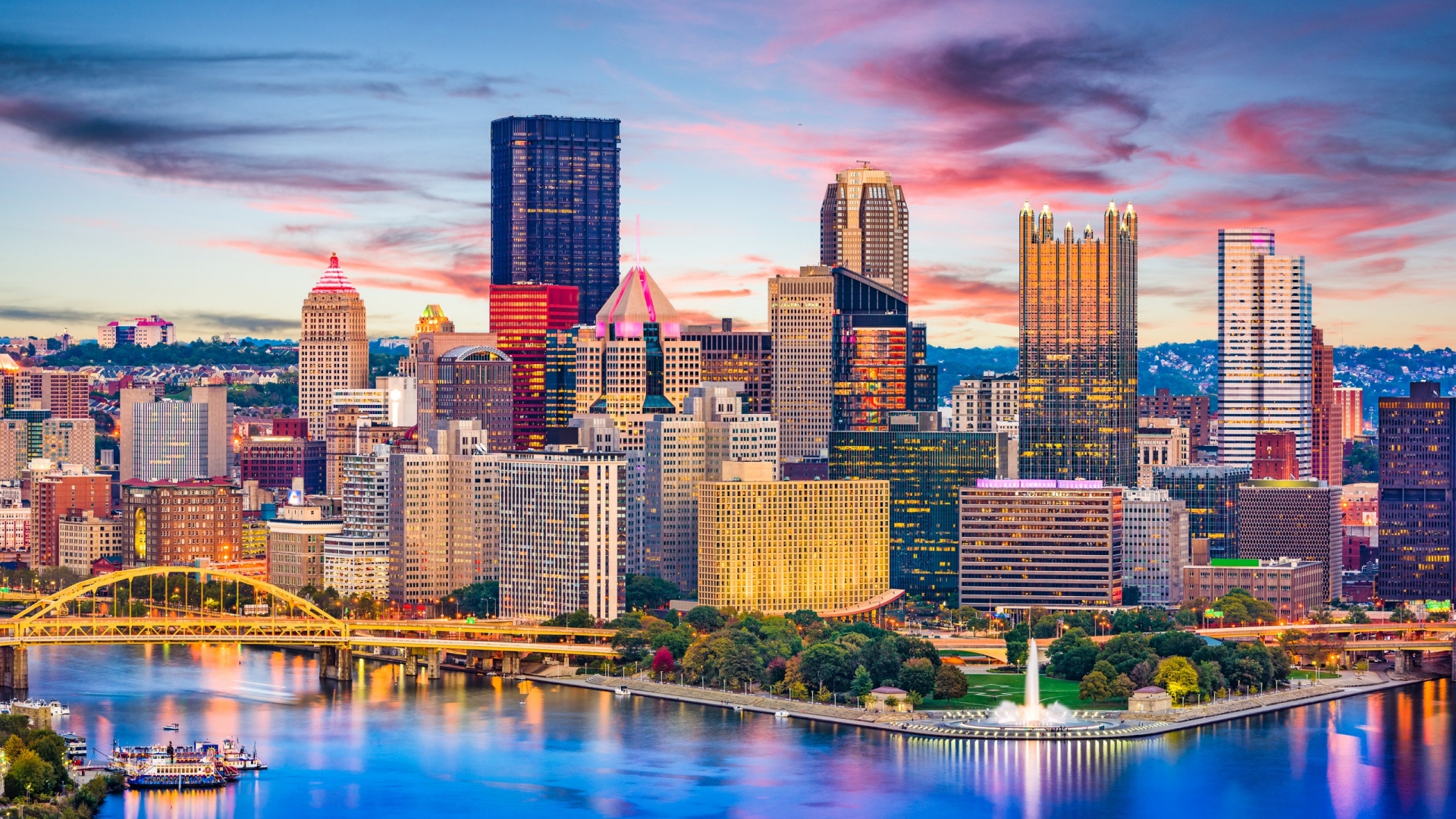 |
| Photo: Conde Nast Traveler |
It’s Steel City, City of (440!) Bridges, Andy Warhol’s hometown and birthplace of the NFL’s “Stillers.” In fact, sports tourism is huge in Pittsburgh, home also to the Penguins and Pirates. According to a study done by the three sports franchises, over the last five years sports tourism led to numerous jobs, $6 billion in direct or indirect spending and $73 million in state and local tax revenue. The city knows how to kick back, too: it ranks #29 for great nightlife and #31 for its culinary scene, making it a place of work and play. The city is also home to Carnegie Mellon and the University of Pittsburgh Medical Center, which helps explain its #16 University ranking and an overall sense of practicality and stewardship (and why urbanist and author Richard Florida launched his career here). Case in point: the city held severe COVID-19 outbreaks at bay and quietly was among the best-performing large U.S. cities from a public health perspective. Economically, the city was middle-of-the-pack during the devastation of the past 18 months, from its one-year change in unemployment rate (#47) to its change in median family income (#59).
49. Cape Coral
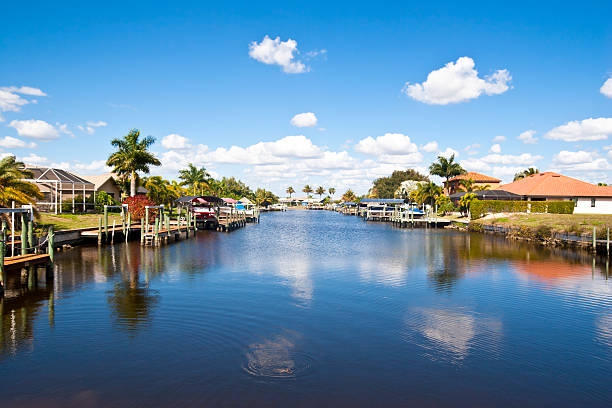 |
| Photo: iStock |
Sure, there’s Southwest Florida’s first Westin property—coming off a $15-million remodel later this summer. As well as another big reno just completed at Boca Grande’s historic Old Florida Gasparilla Inn. But people are coming here to live. It’s not only the safest city in the nation, it’s also one of the most beautiful, ranked #3 in our Parks & Outdoors subcategory. What Cape Coral lacks in the soft, sandy beaches of its neighboring islands it more than makes up for in riverfront vistas and outdoor pursuits galore. It’s also one of the most accessible, with Southwest Florida International Airport (RSW)—ranked #35 nationally for Connectivity—a mere 30-minute drive after baggage claim. The city is attractive to students, too, who are drawn to the easy lifestyle and a dozen colleges and community colleges within 50 miles of the city center. Increasingly, graduates are putting down roots. According to Yahoo Finance, more than 50% of Millennials in the region own homes—the third highest rate in the nation. A post-pandemic wave of next-level dining and drinking options—ranging from elevated cuisine at the Bohemian to Ceremony Brewing—is sure to improve the area’s #70 Restaurants ranking in the future.
50. Riverside
 |
| Photo: Universal Commercial Capital |
They call it the City of Arts and Innovation, but Riverside, on the outskirts of Los Angeles, also lays claim to being the birthplace of the California citrus industry, a fact honored at the 248-acre California Citrus State Historic Park. Living up to its name, Riverside is also home to the Riverside Metropolitan Museum and Fox Performing Arts Center, a 1929 theater built in Spanish Colonial Revival style in the heart of downtown. The city boasts one of the nation’s most ethnically diverse populations, with citizens of Hispanic descent making up 53% of the local population, while nearly 44% of citizens speak a non-English language. Like a reflection of the community around it, University of California, Riverside (ranked #39 in our University subcategory), is one of the nation’s most ethnically varied postsecondary institutions. Riverside also performs well in our Place category (#17), which includes Safety (#34) and the third-best weather in the country—that is, only if you enjoy 277 days of sunshine annually. The city has also fared very well during the pandemic, attracting residents in the work-from-home new normal and raking Top 10 nationally in both our Change in Civilian Labor Force and Change in Family Income subcategories.
For more interesting news of KnowInsiders, check out right below!
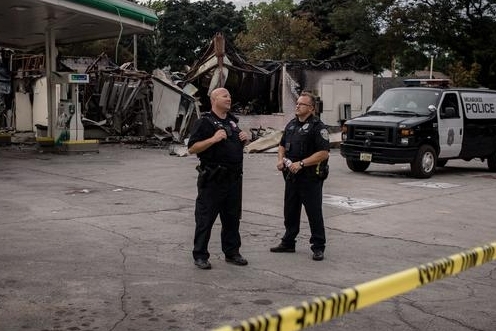 Top 10 Most Violent Cities In The US Today - By FBI Top 10 Most Violent Cities In The US Today - By FBI Which cities in the US have the highest violence rate? Which ones are the most dangerous? |
 Top 10 Most Visited Cities In The United States Today Top 10 Most Visited Cities In The United States Today To help anyone hoping to see some of what the U.S has to offer visitors, we've put together a list of 10 most visited tourist ... |
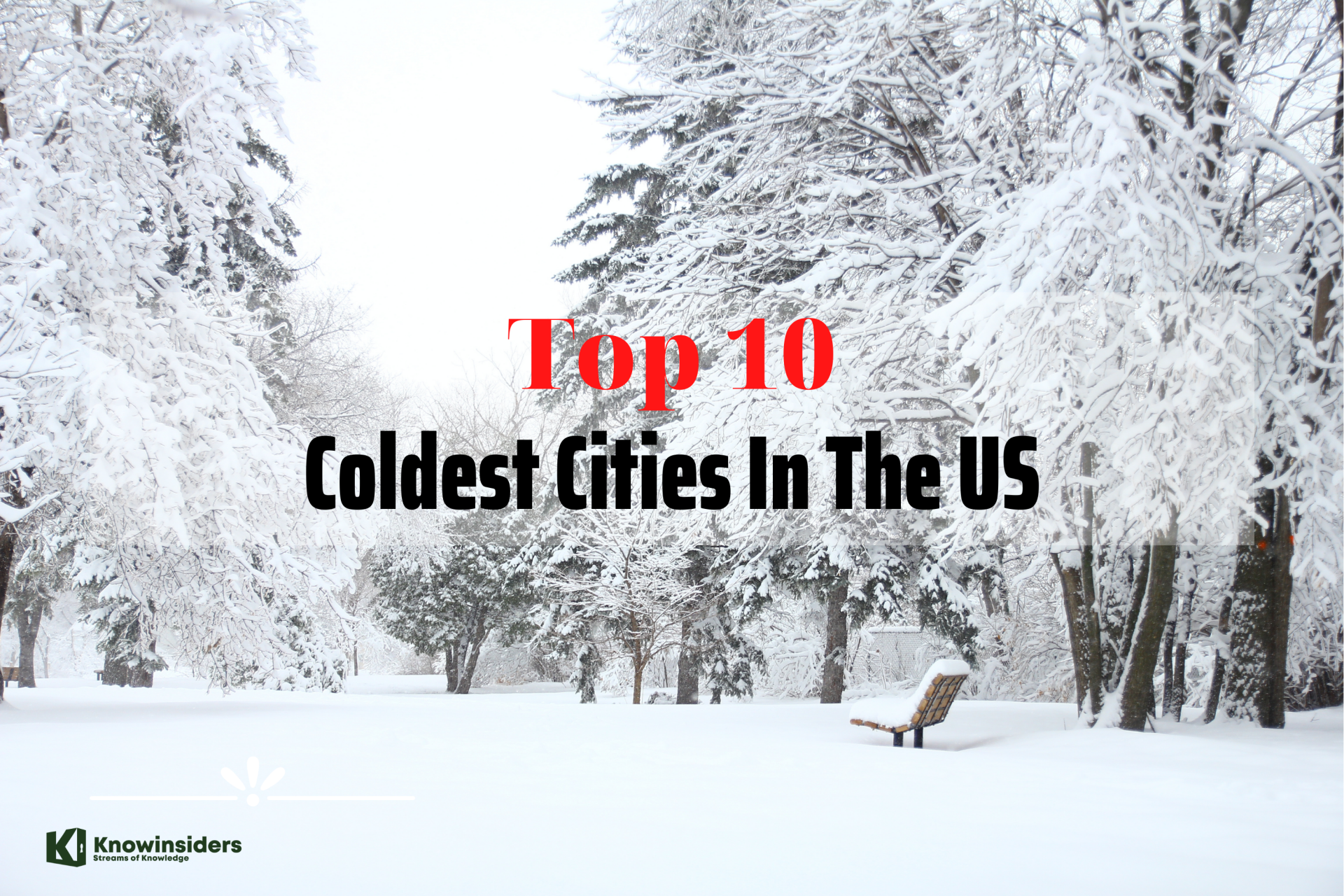 Top 10 Coldest Cities In The United States Top 10 Coldest Cities In The United States What are the top 5 coldest cities in the United States? Here’s the list, based on average temperatures, according to the National Weather Service. |























